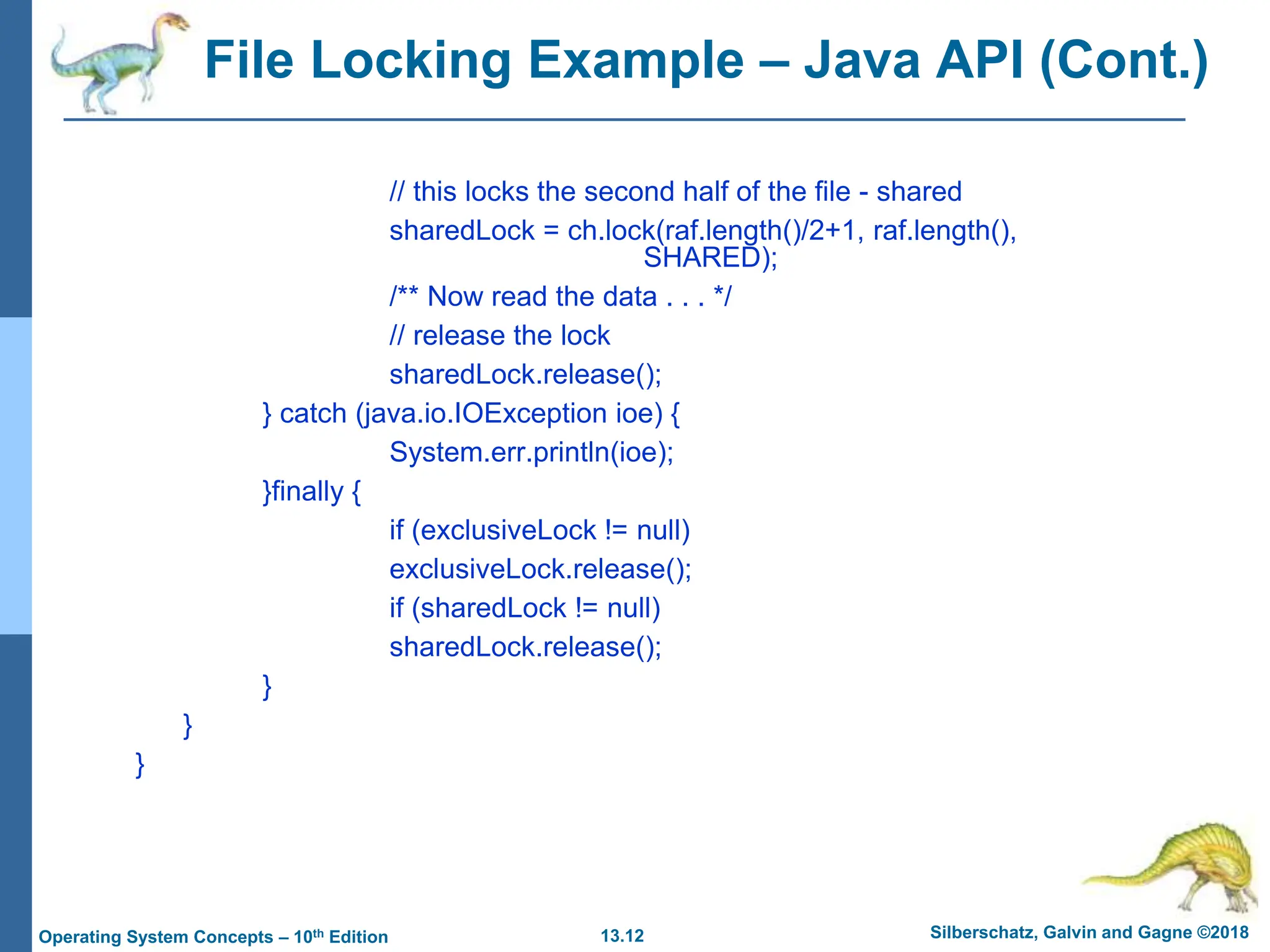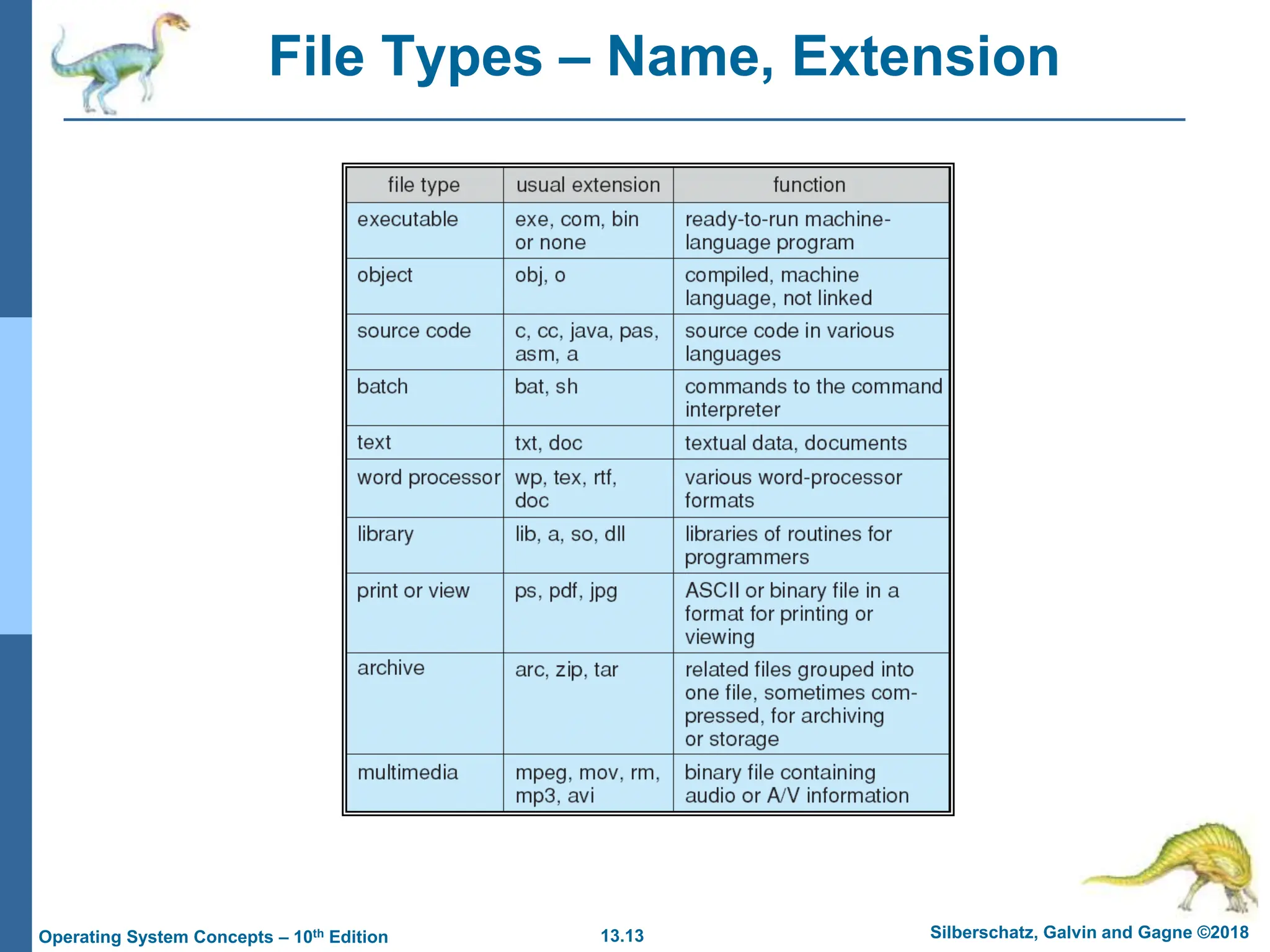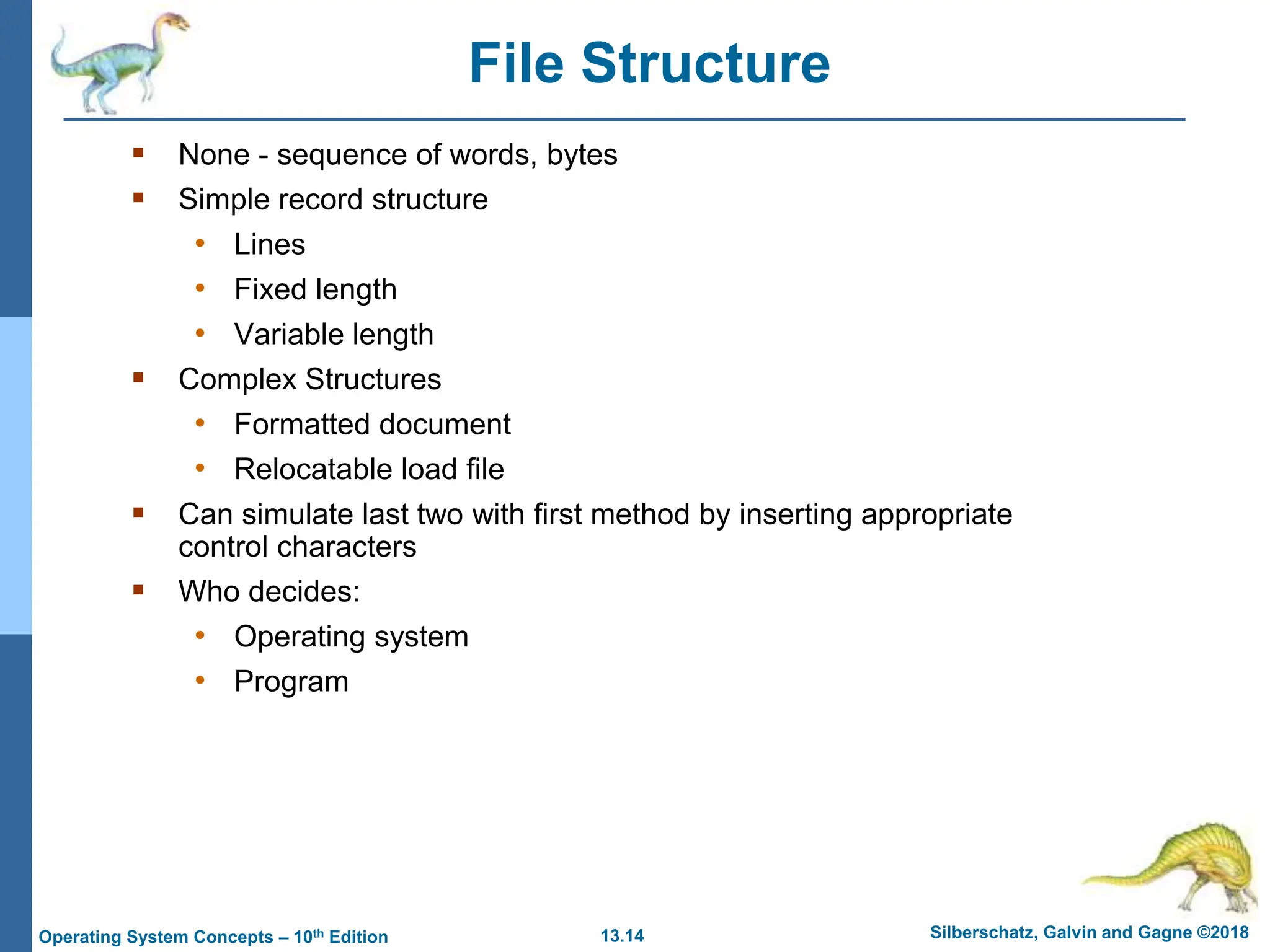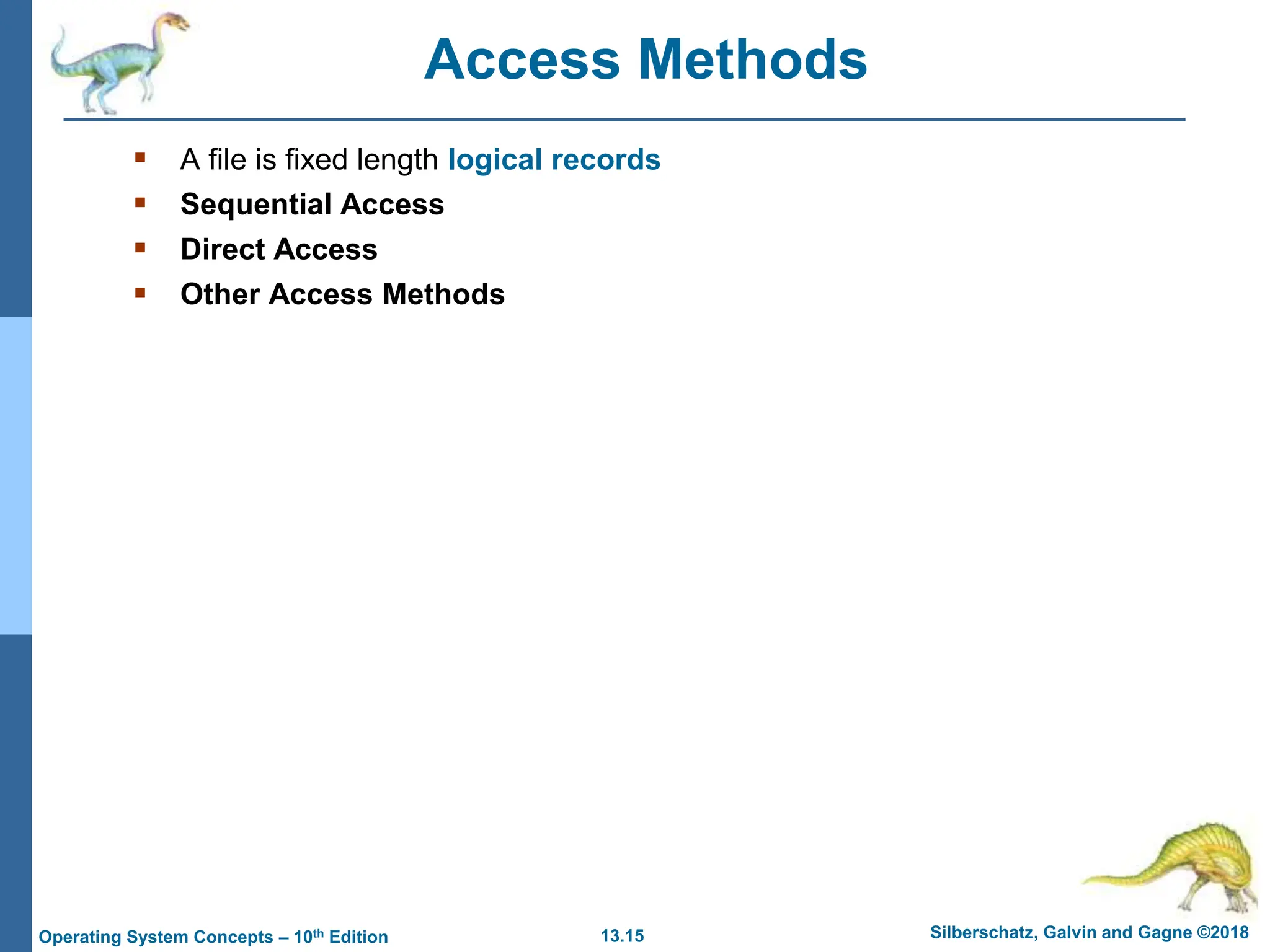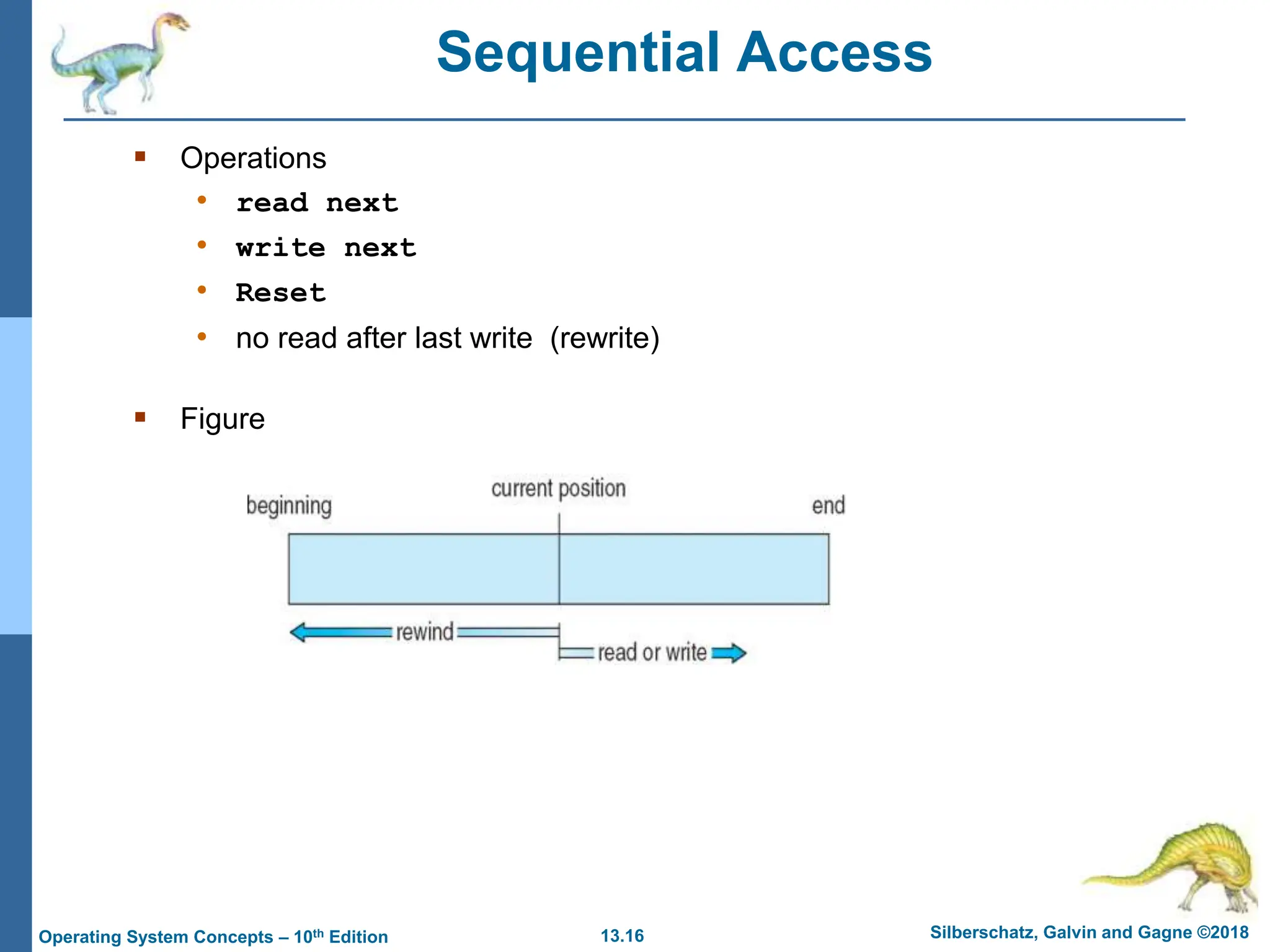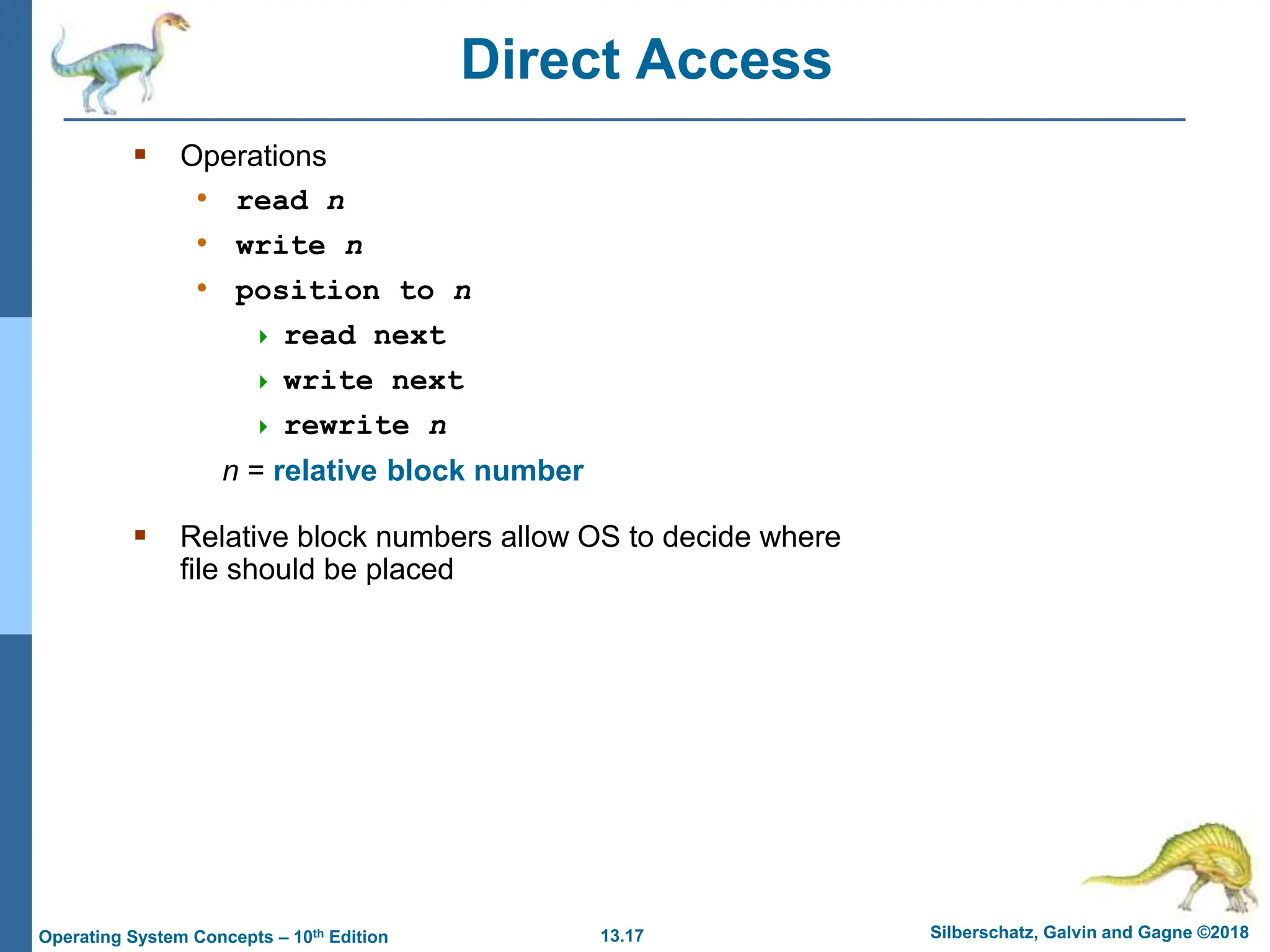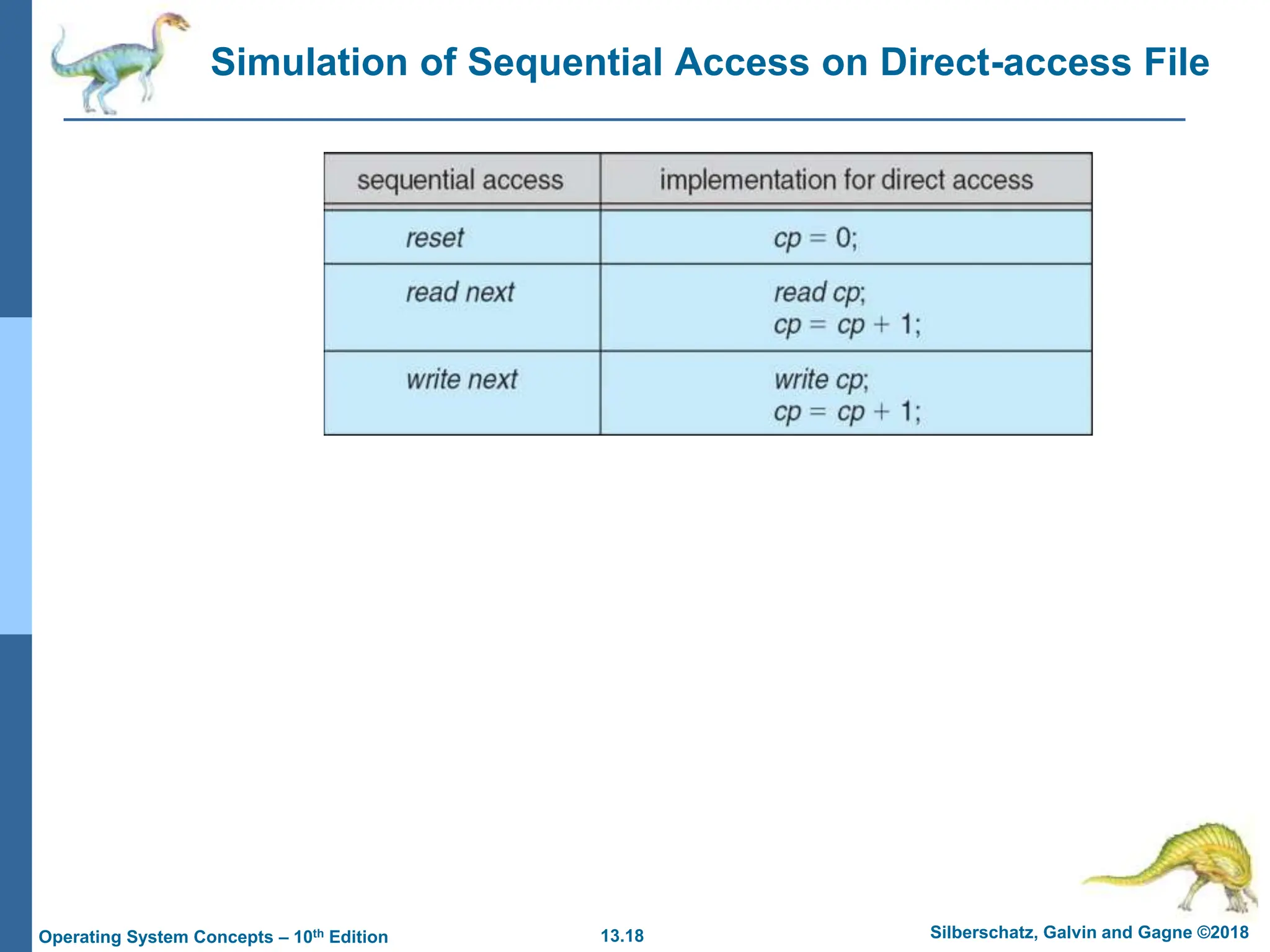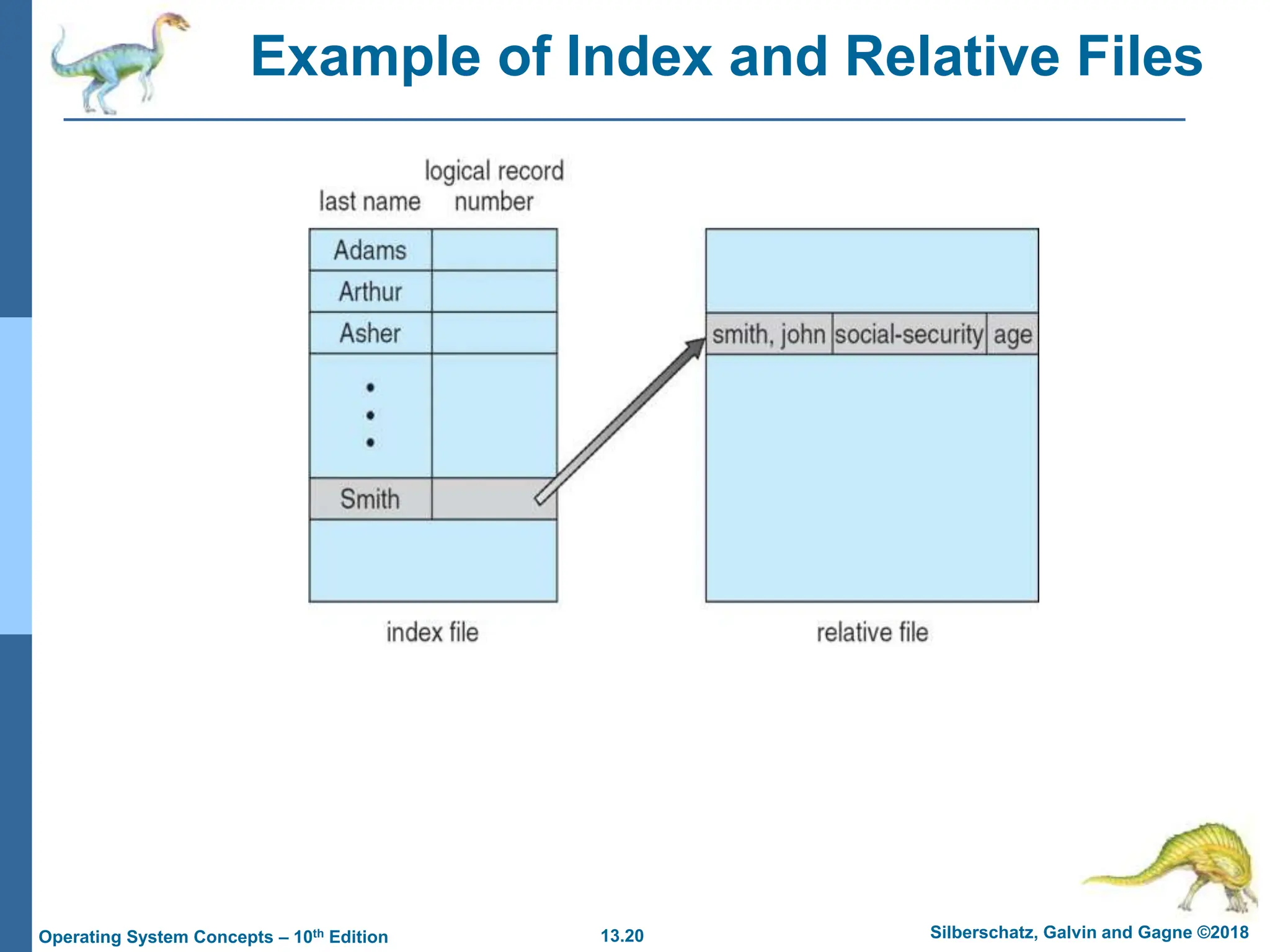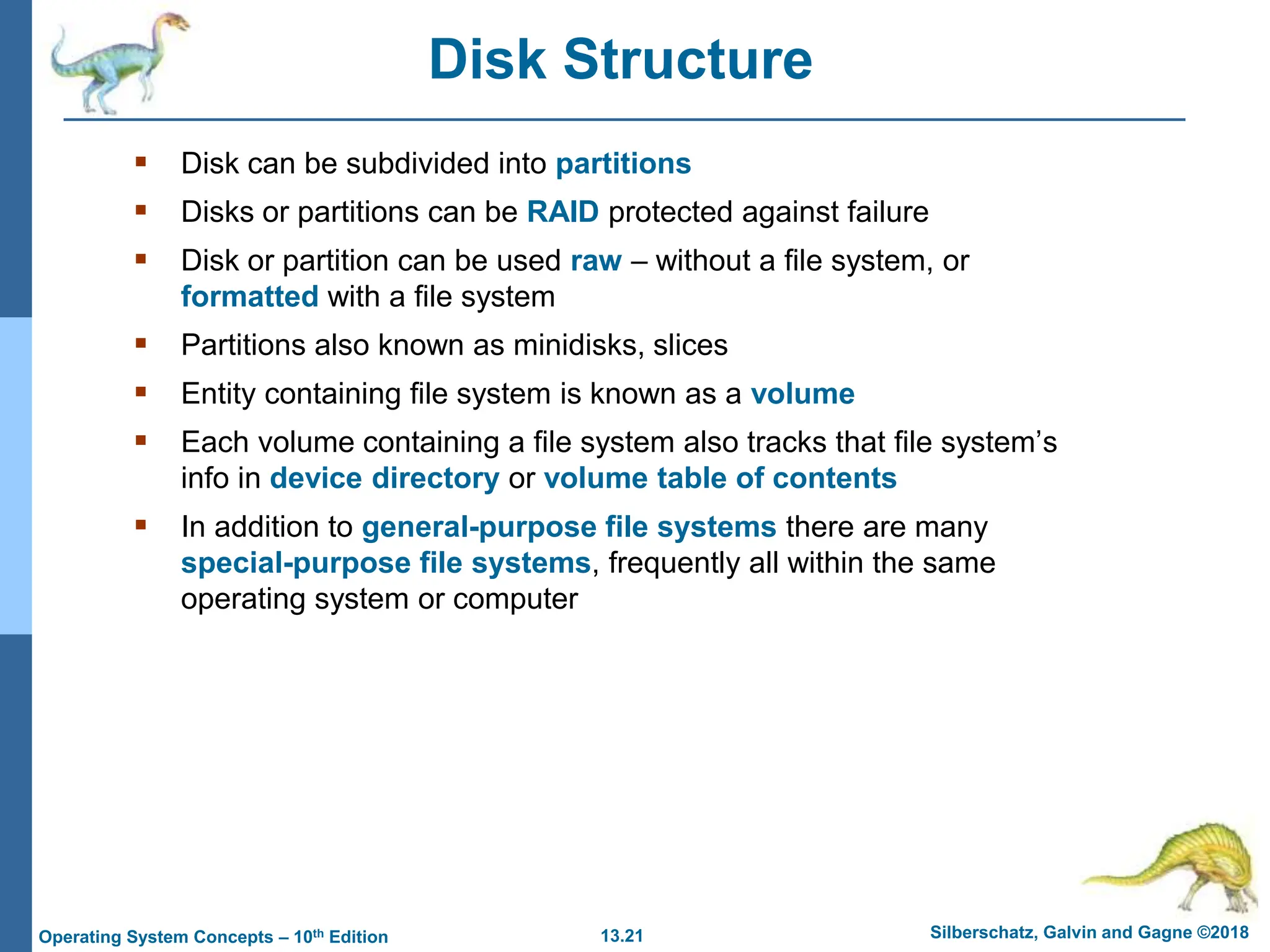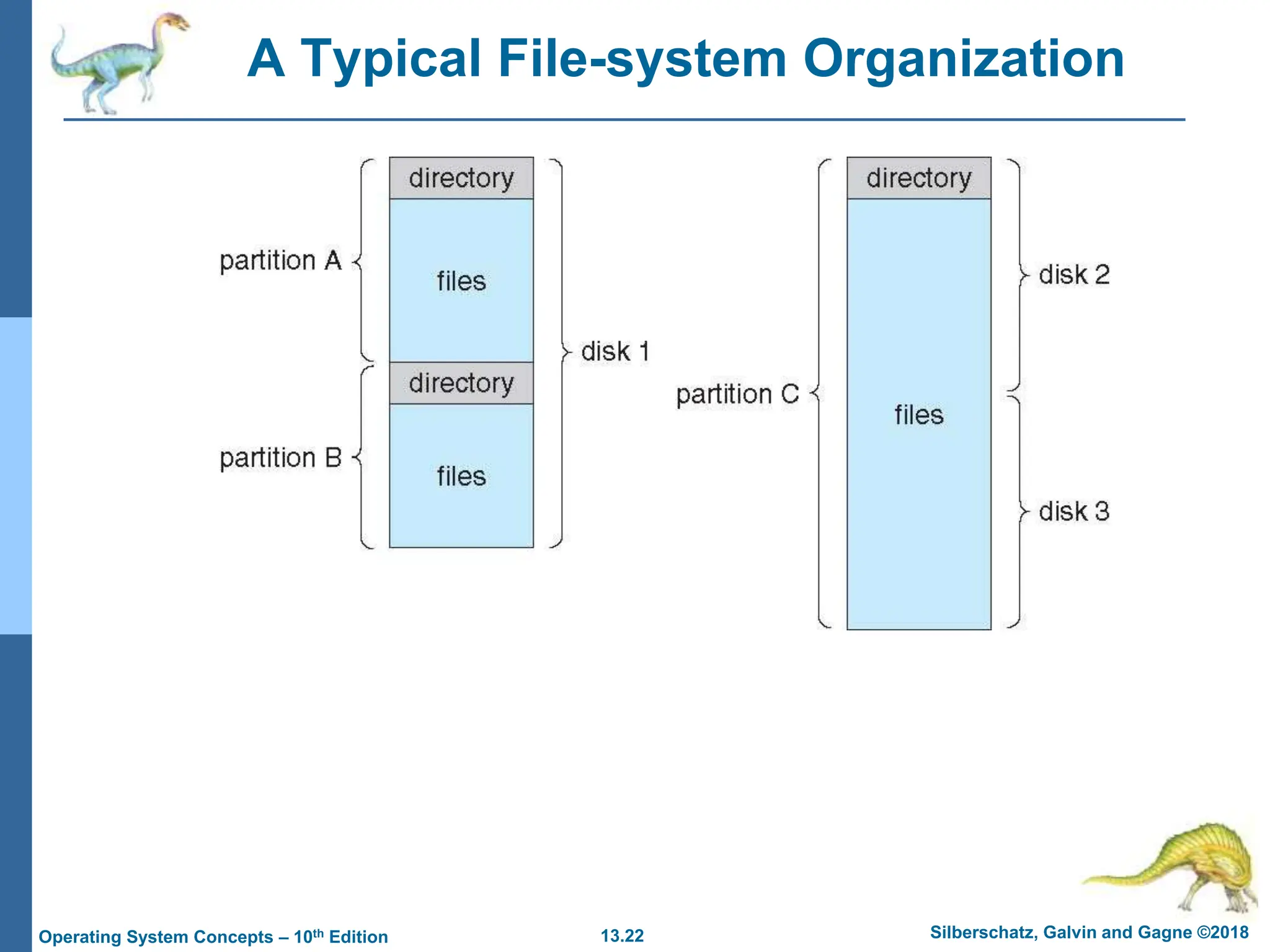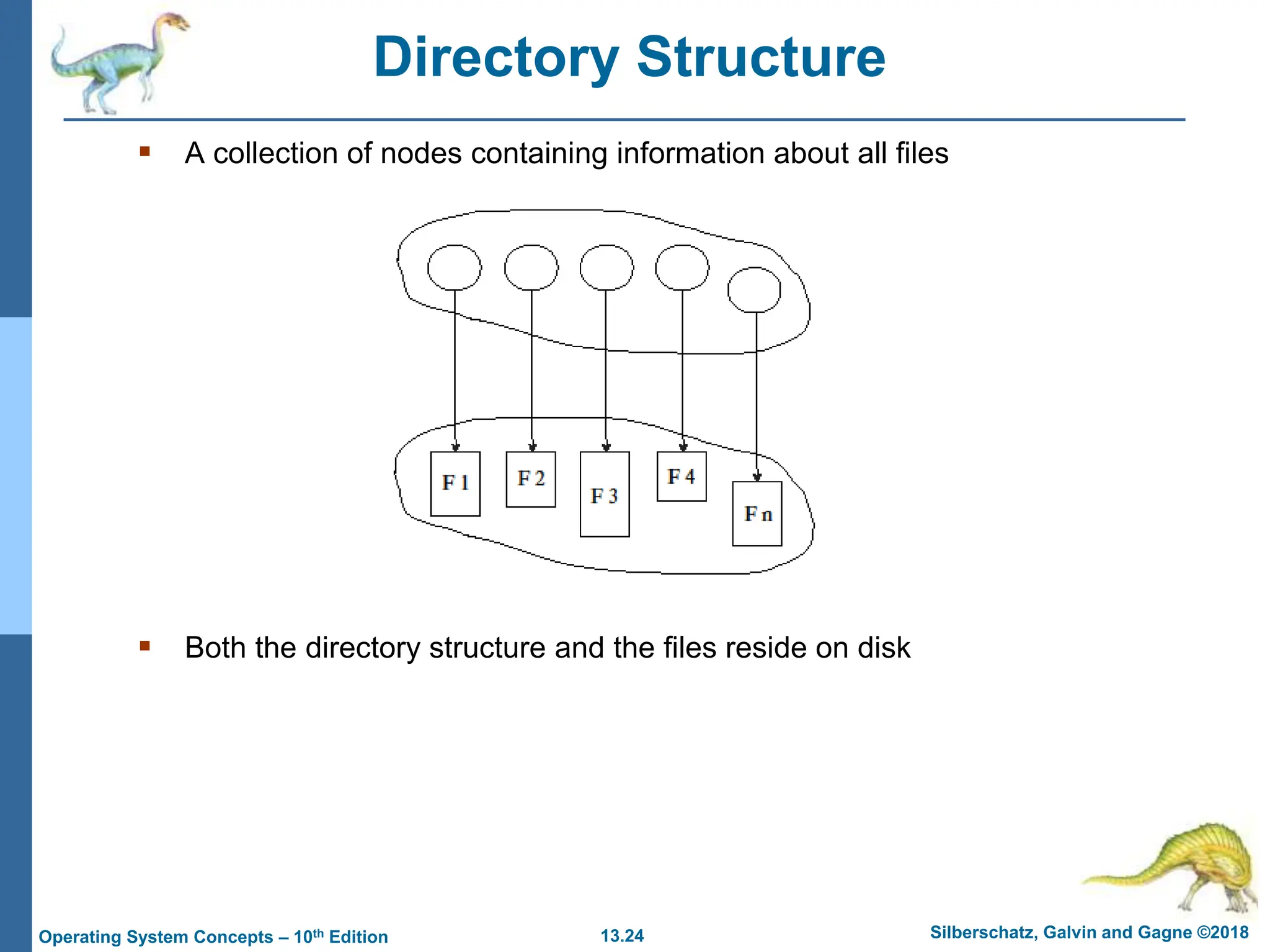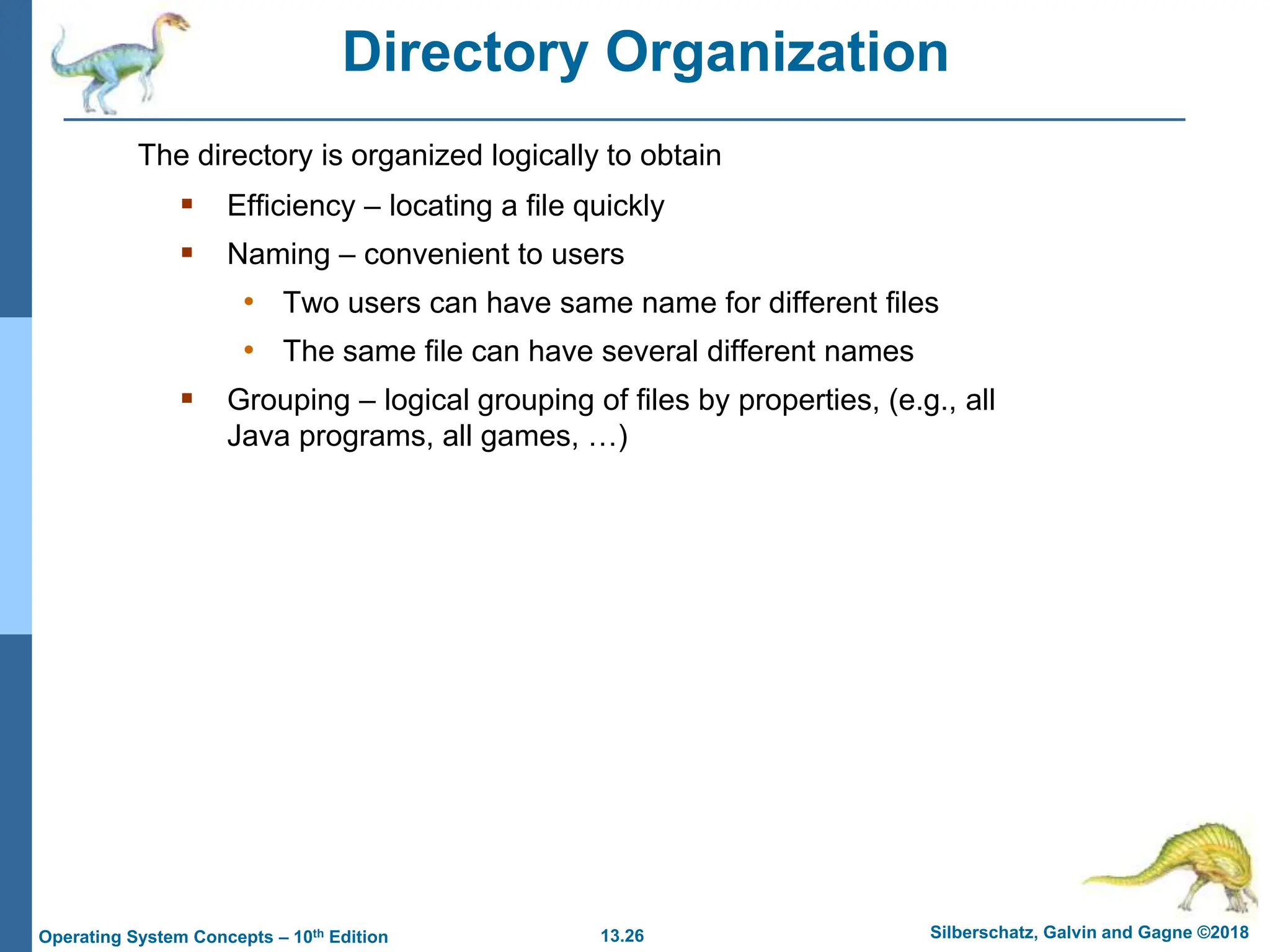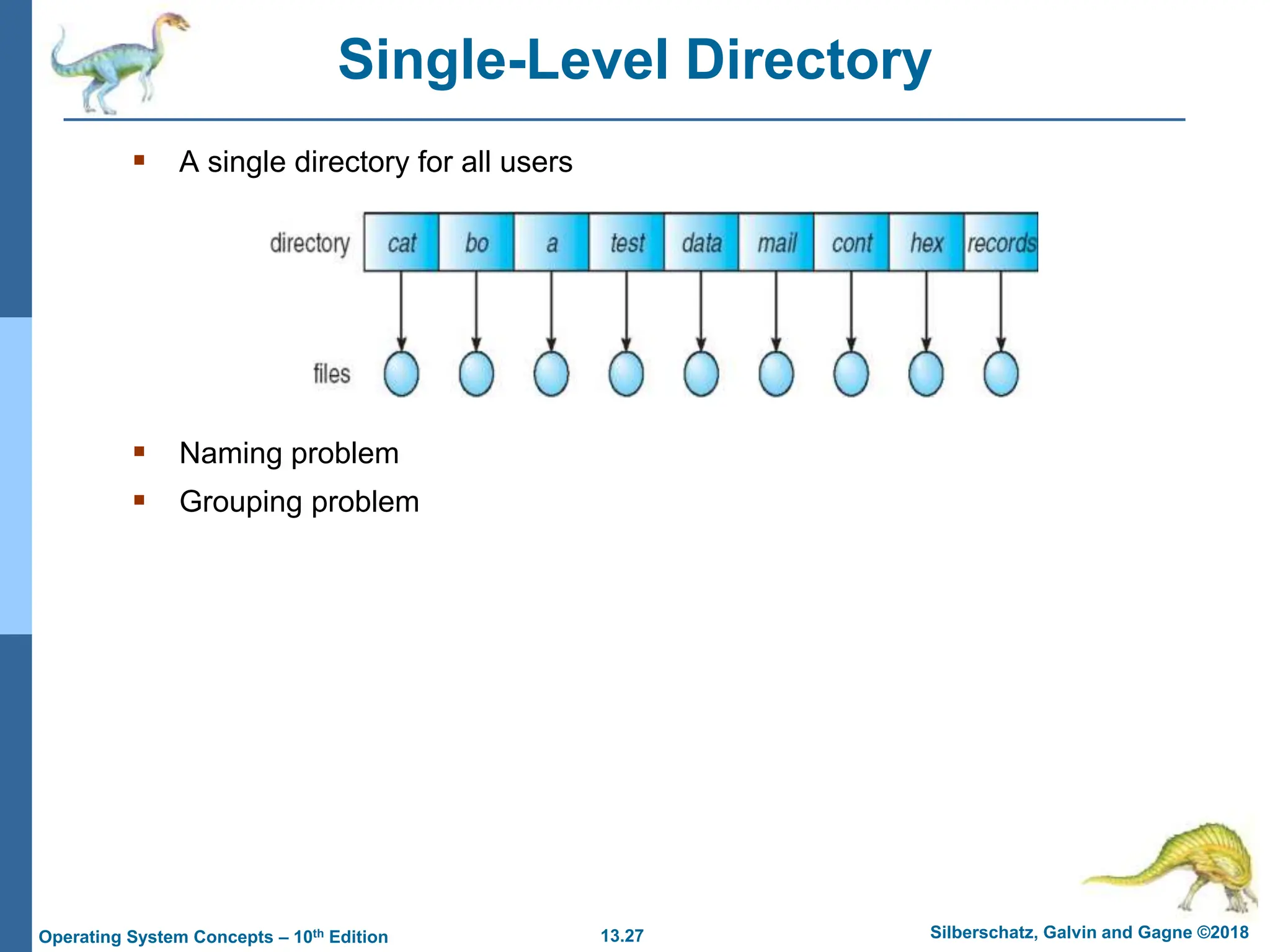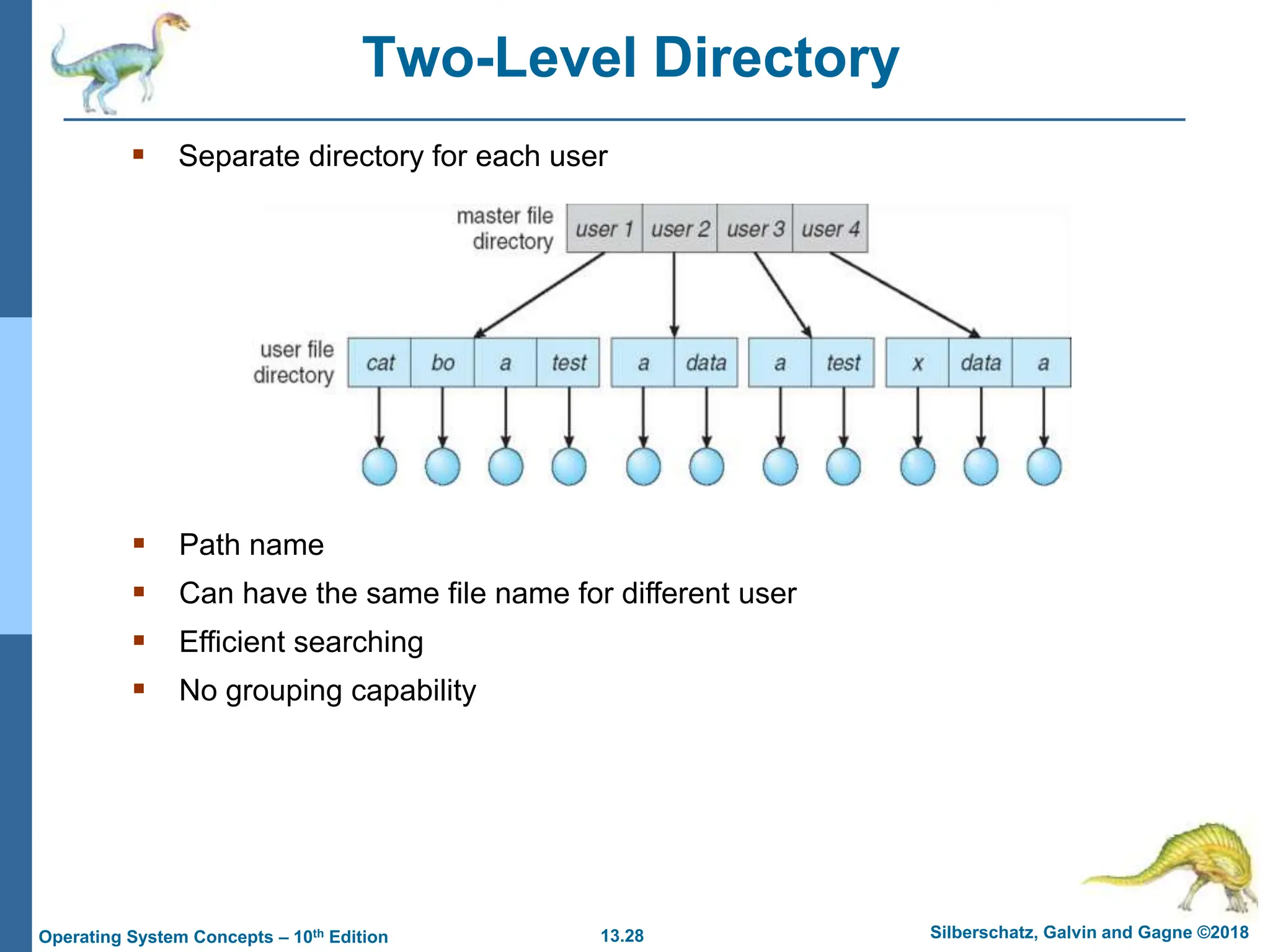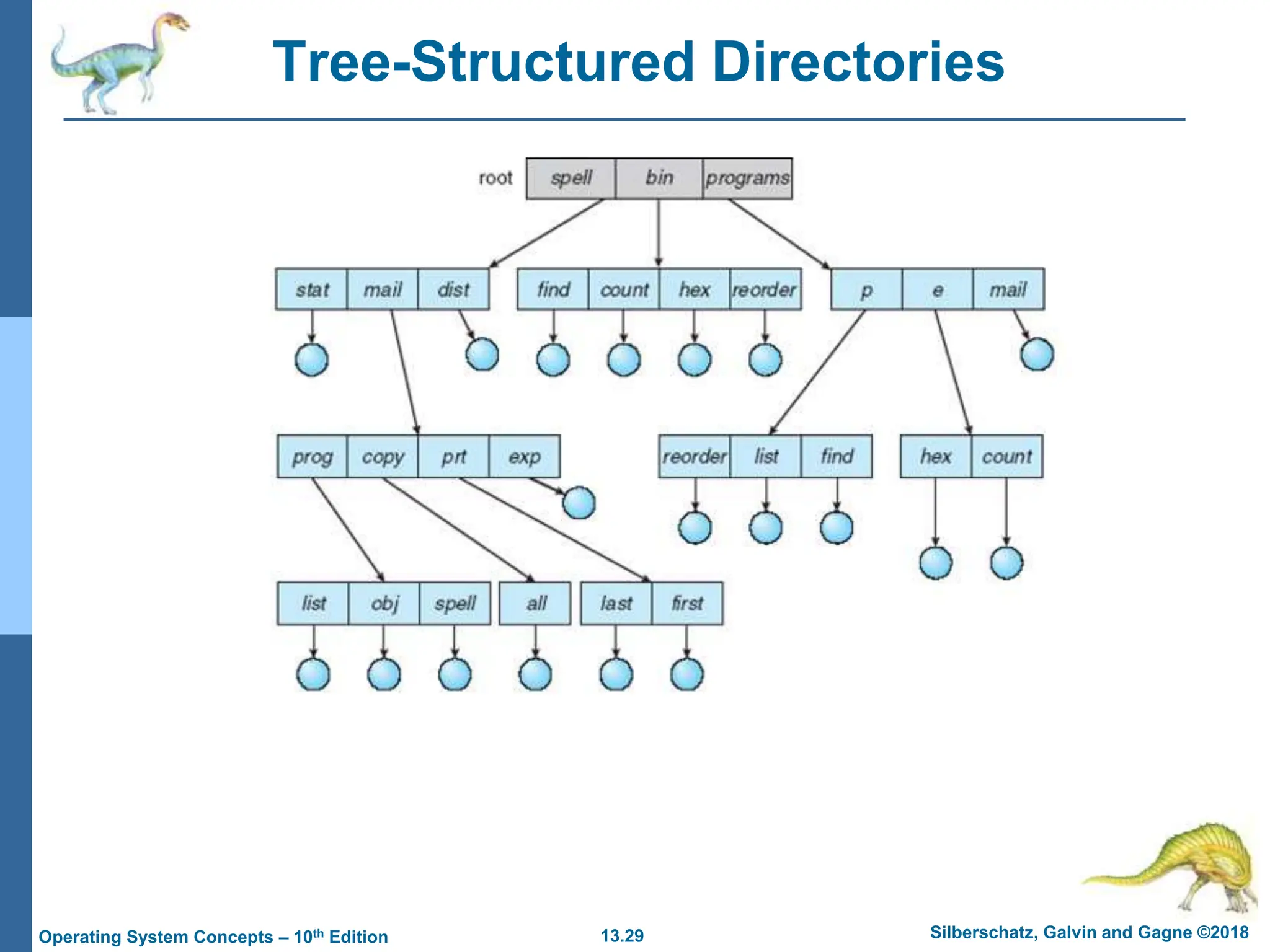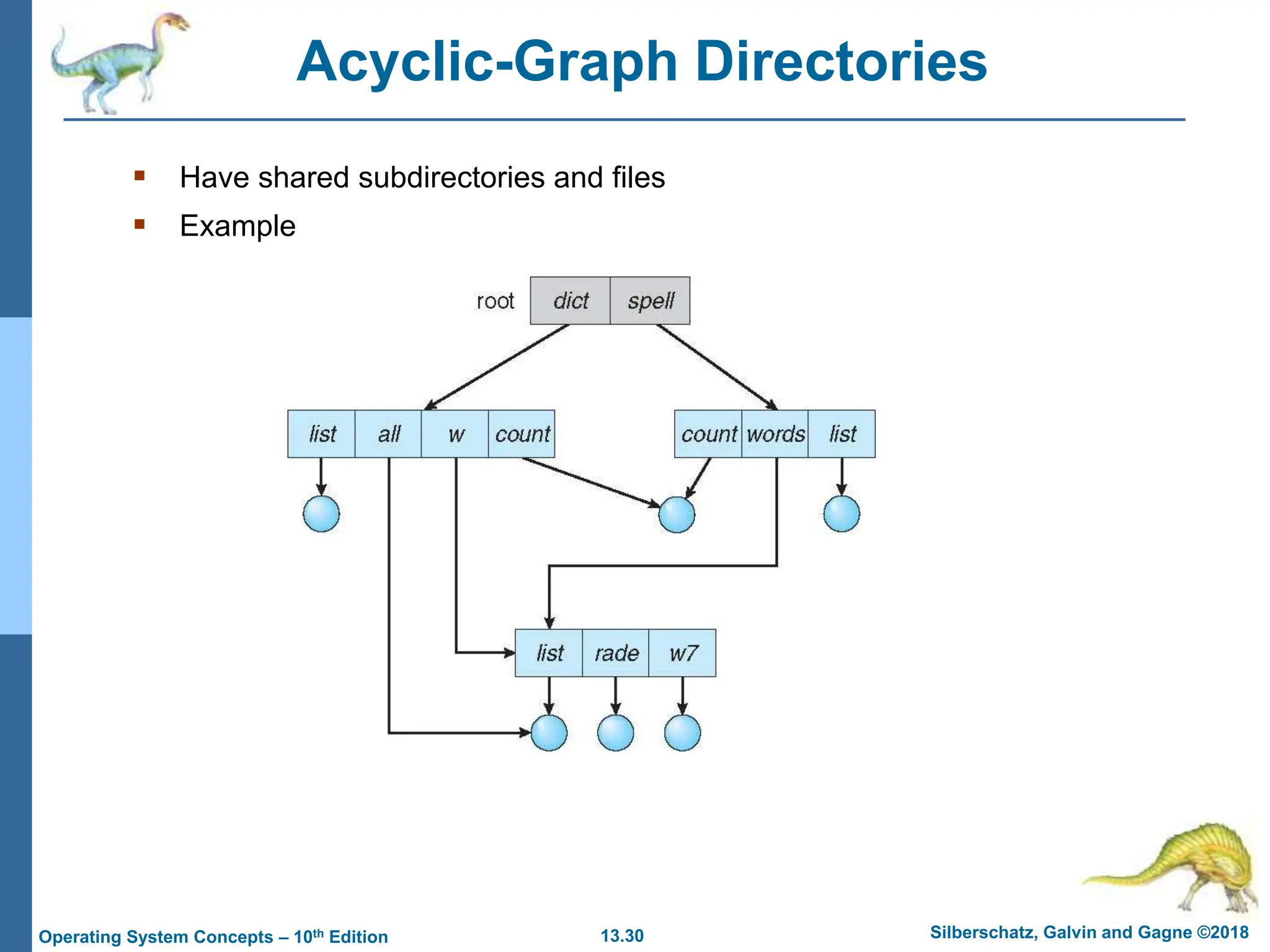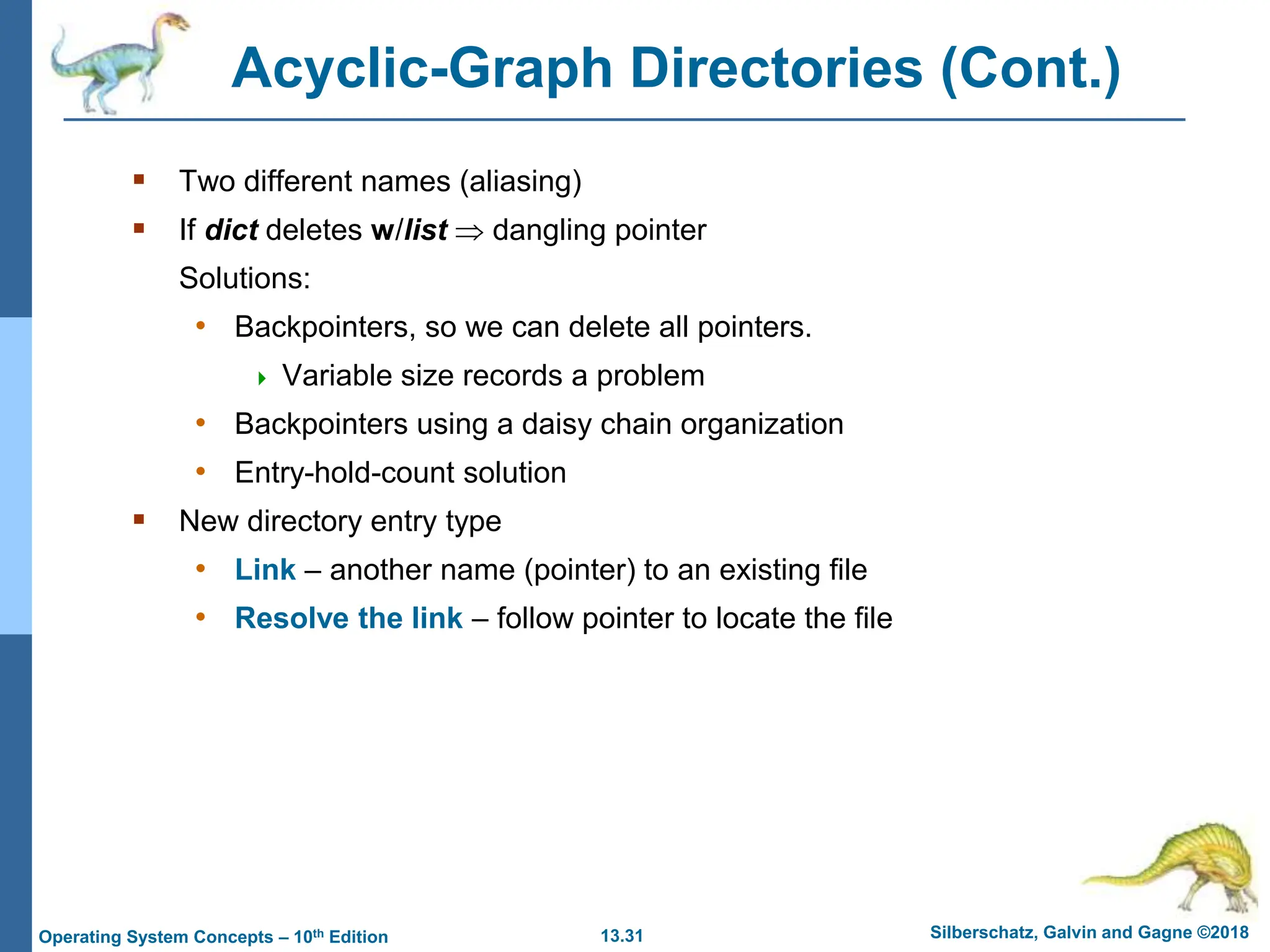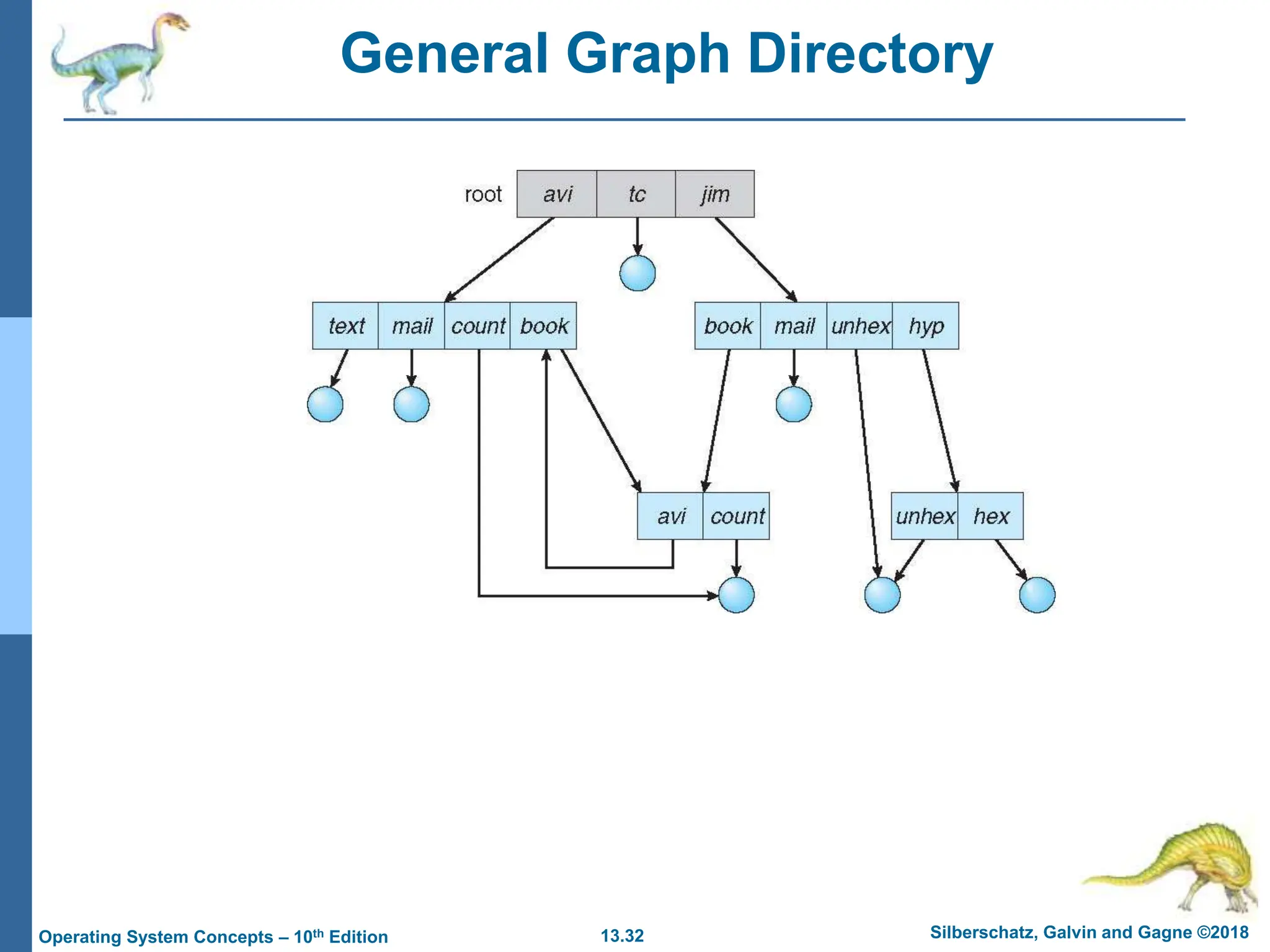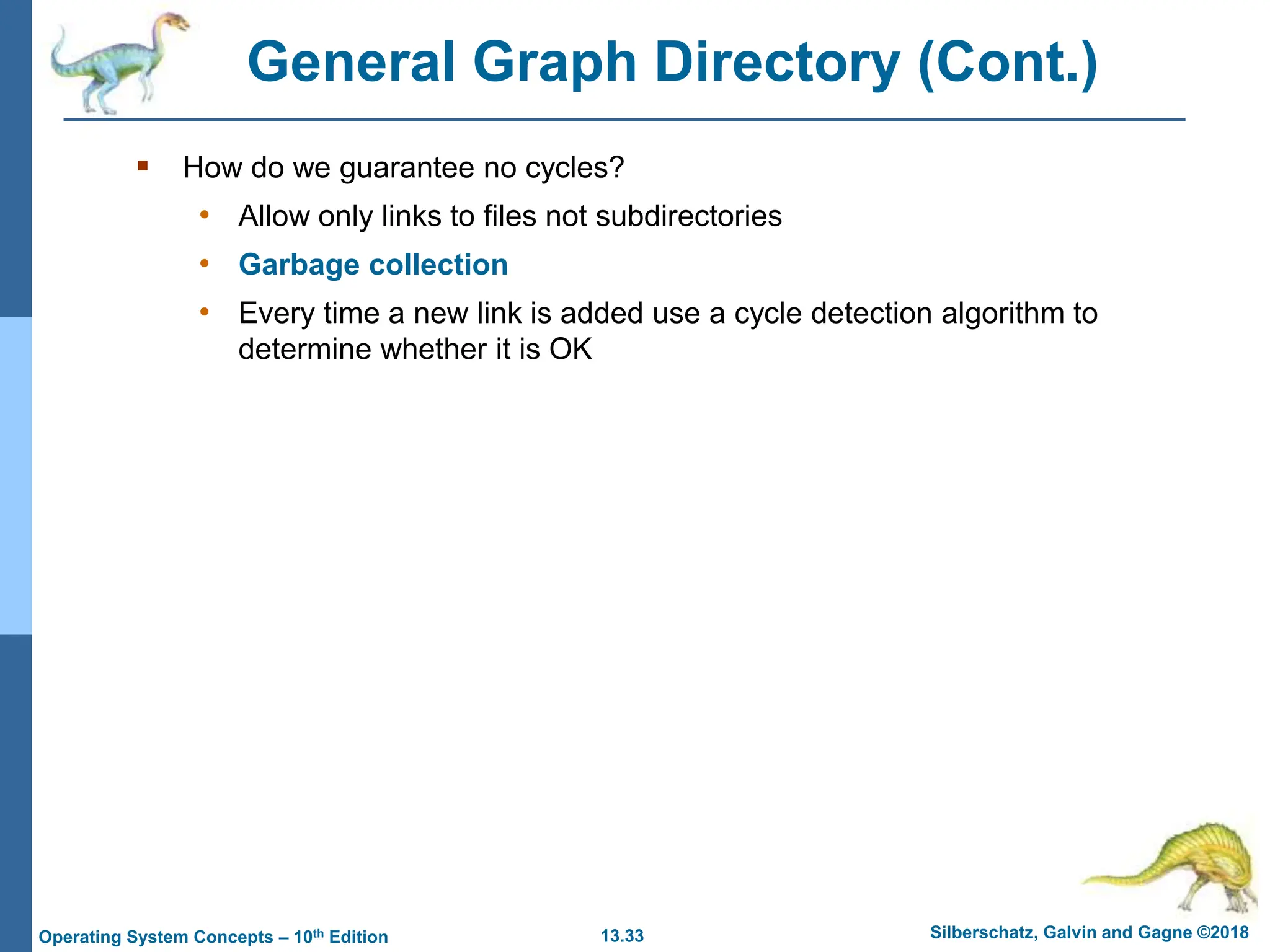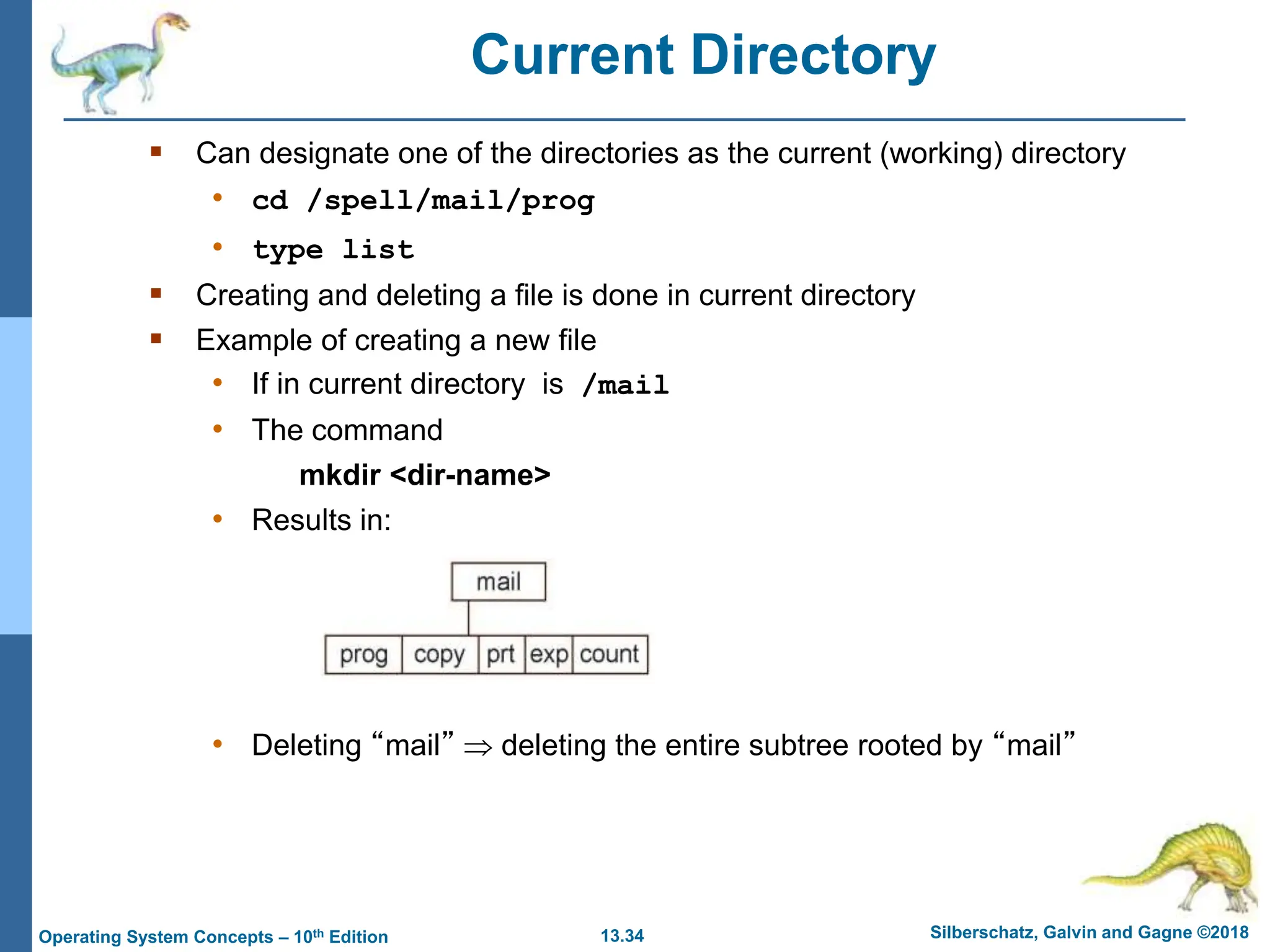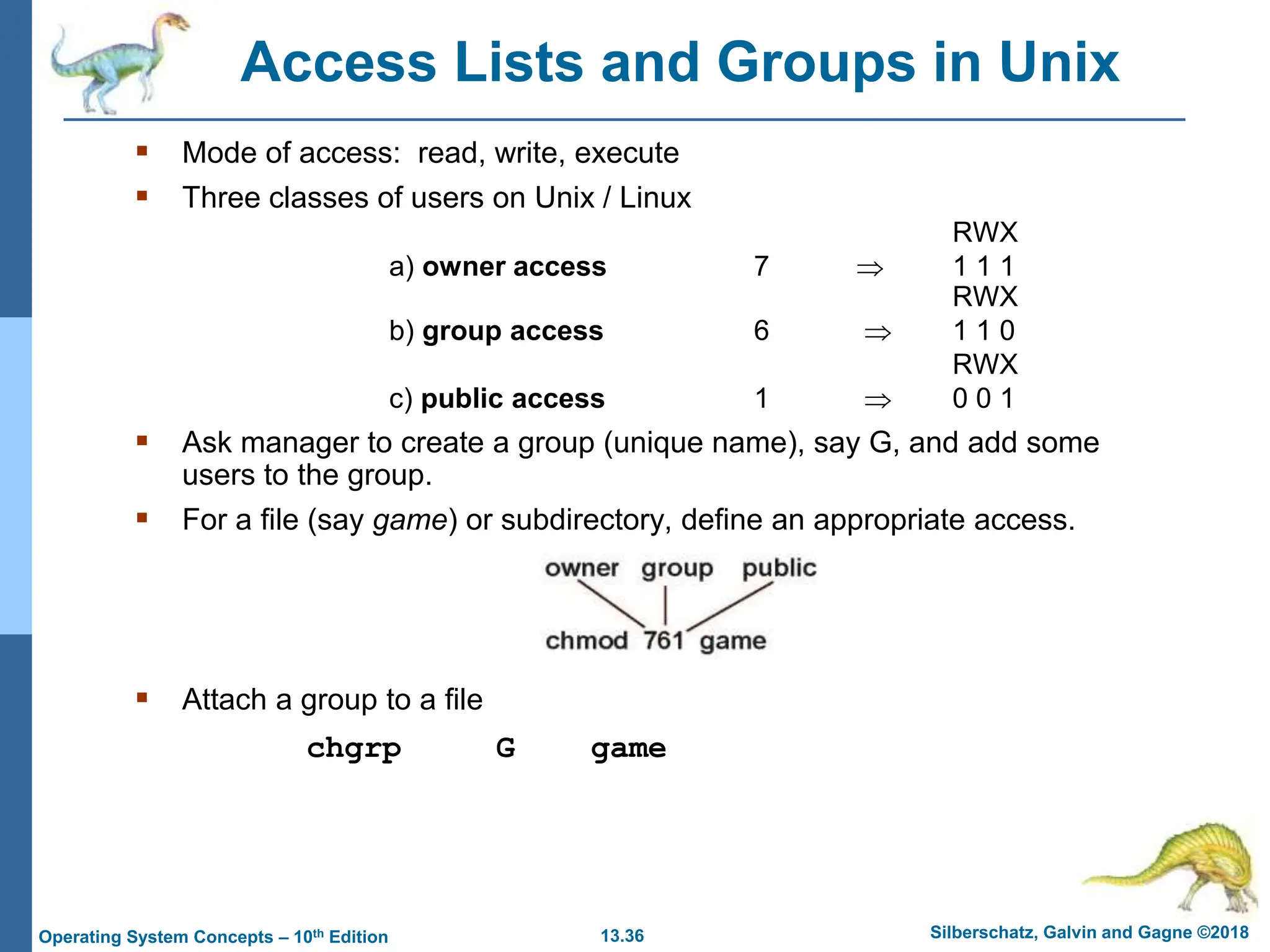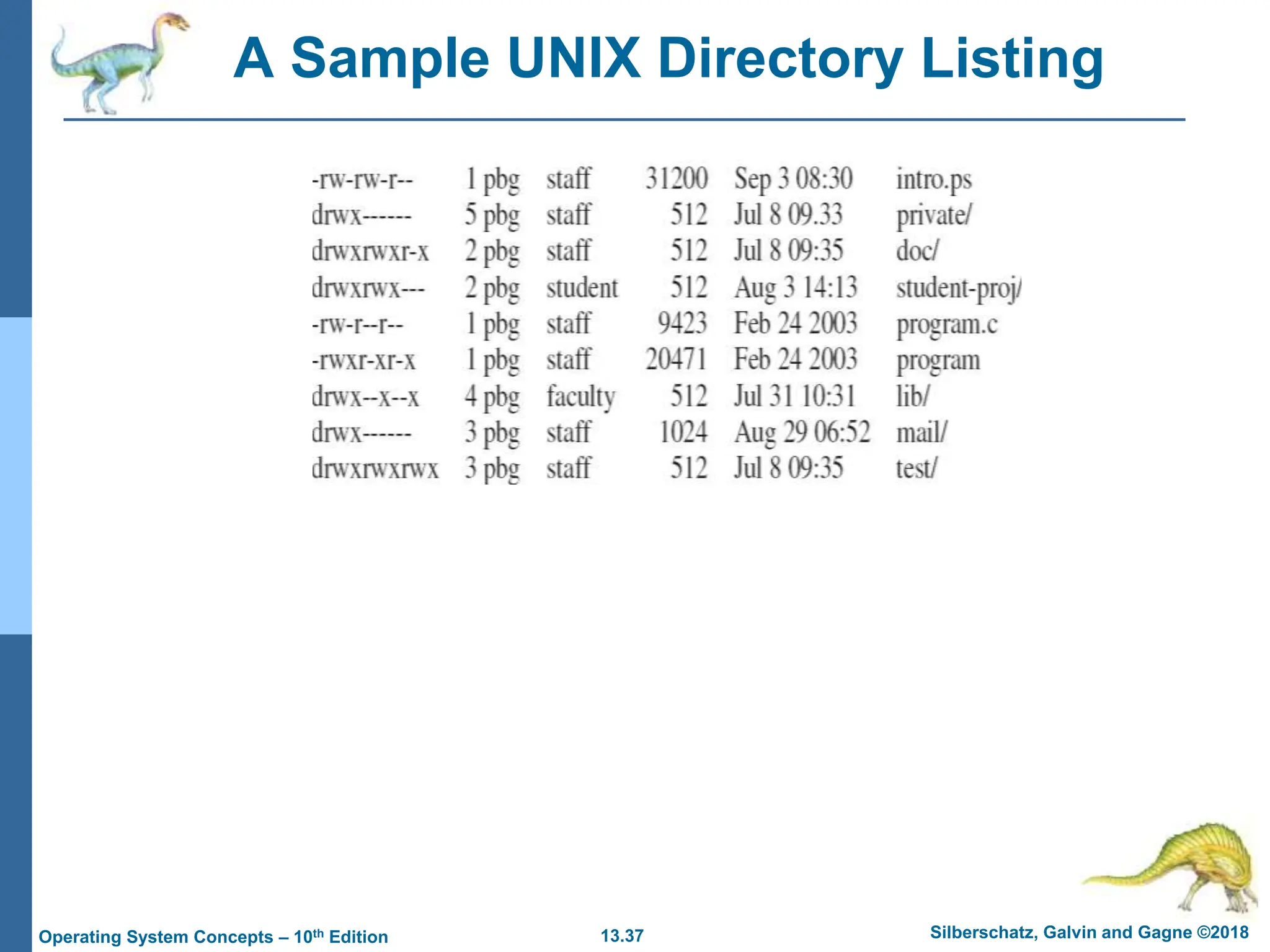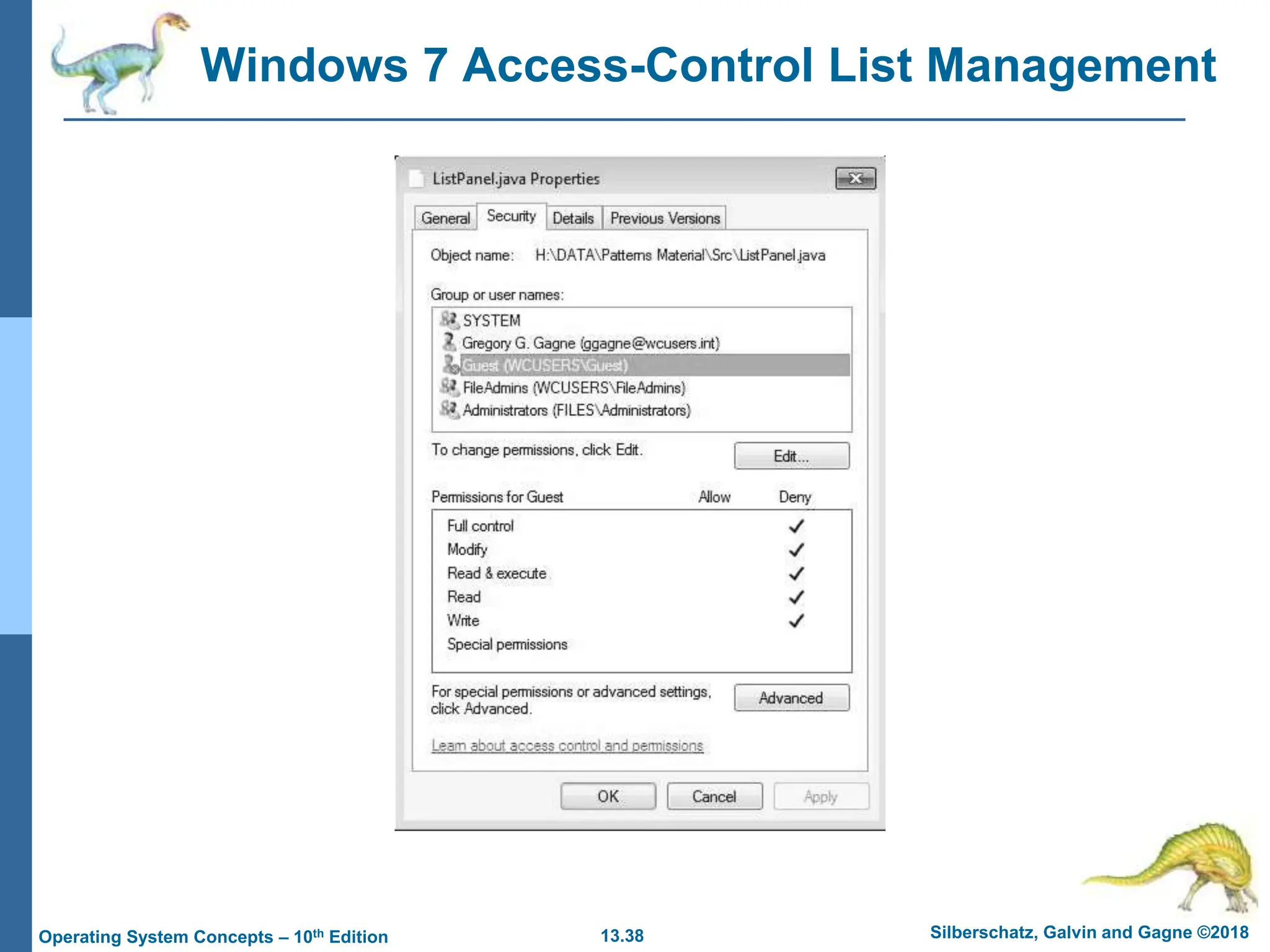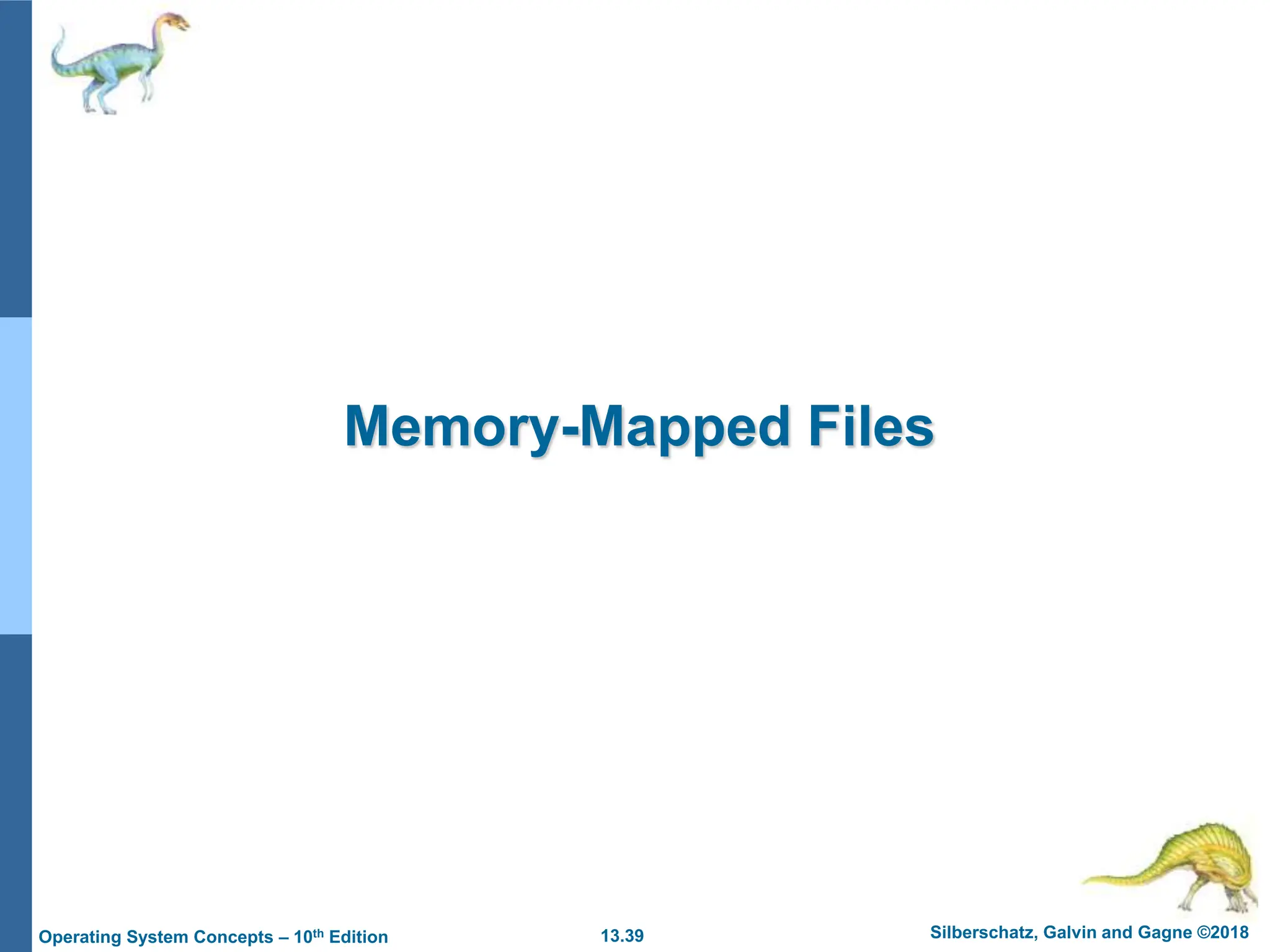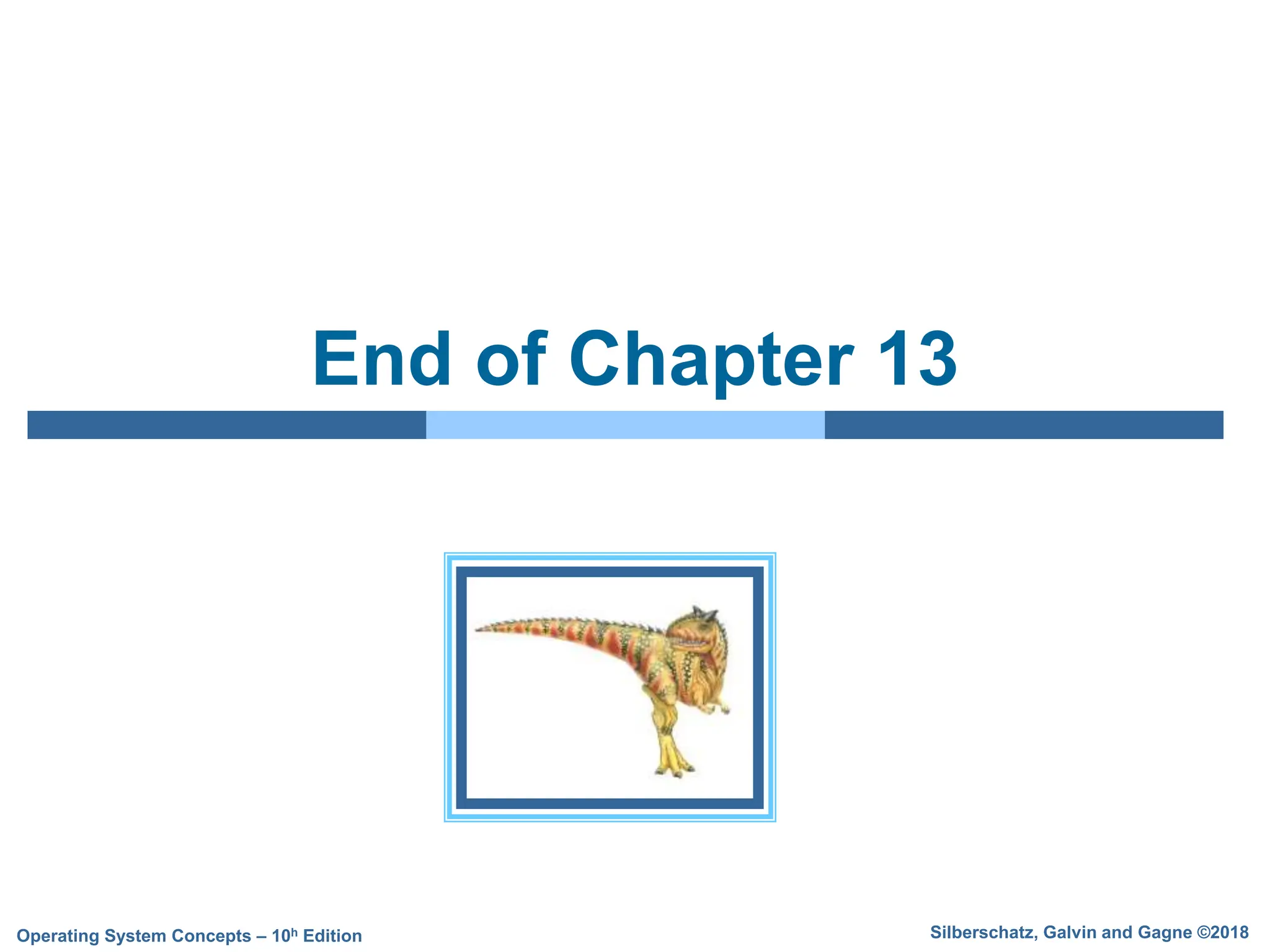This document discusses file systems and their interfaces. It covers file concepts, attributes, operations, access methods including sequential, direct, and other approaches. Directory structures are examined including single-level, two-level, tree-structured, and acyclic graph organizations. File locking, protection, and memory-mapped files are also introduced. The objectives are to explain file system functions, interfaces, design tradeoffs, and protection mechanisms.



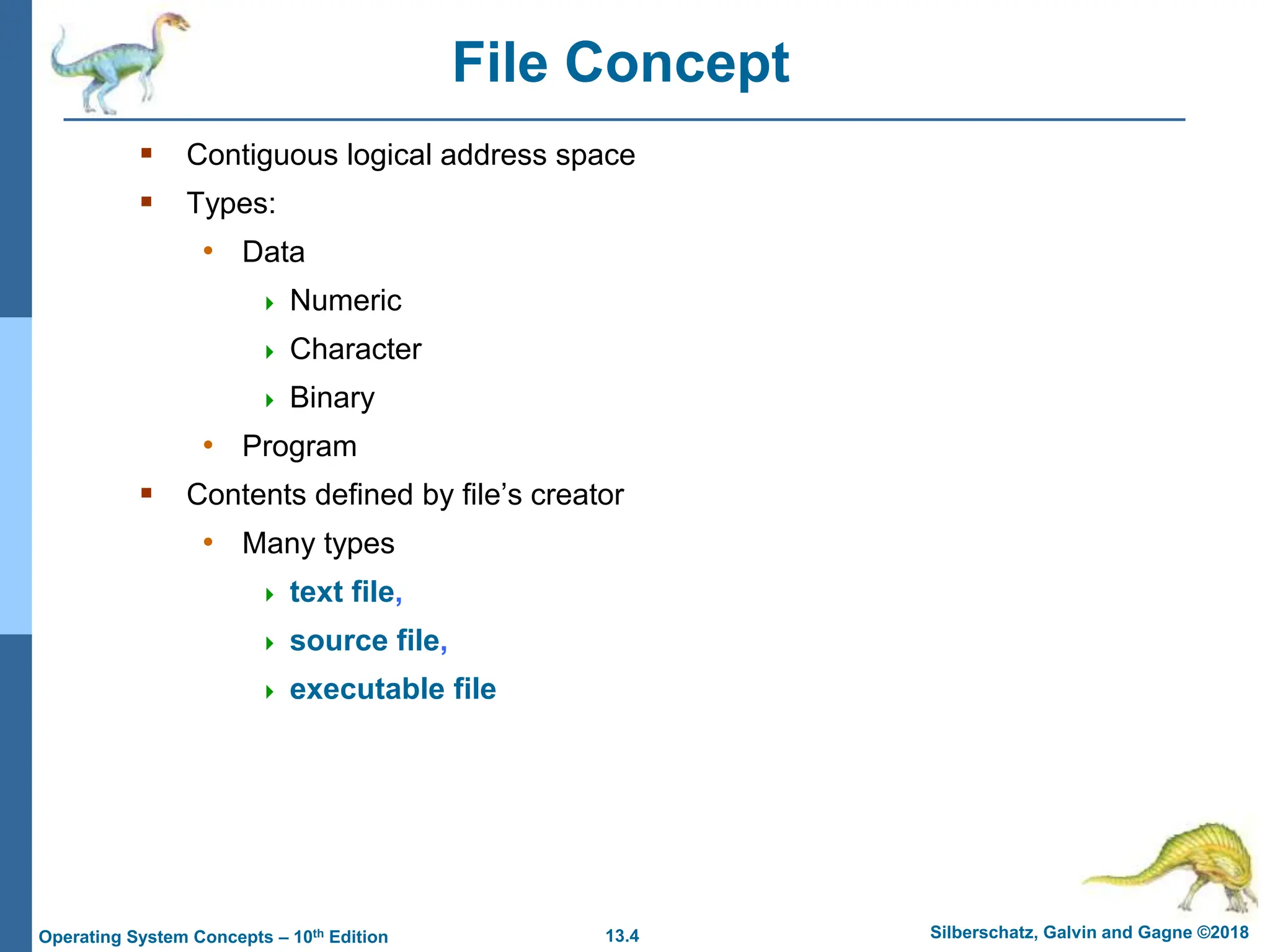
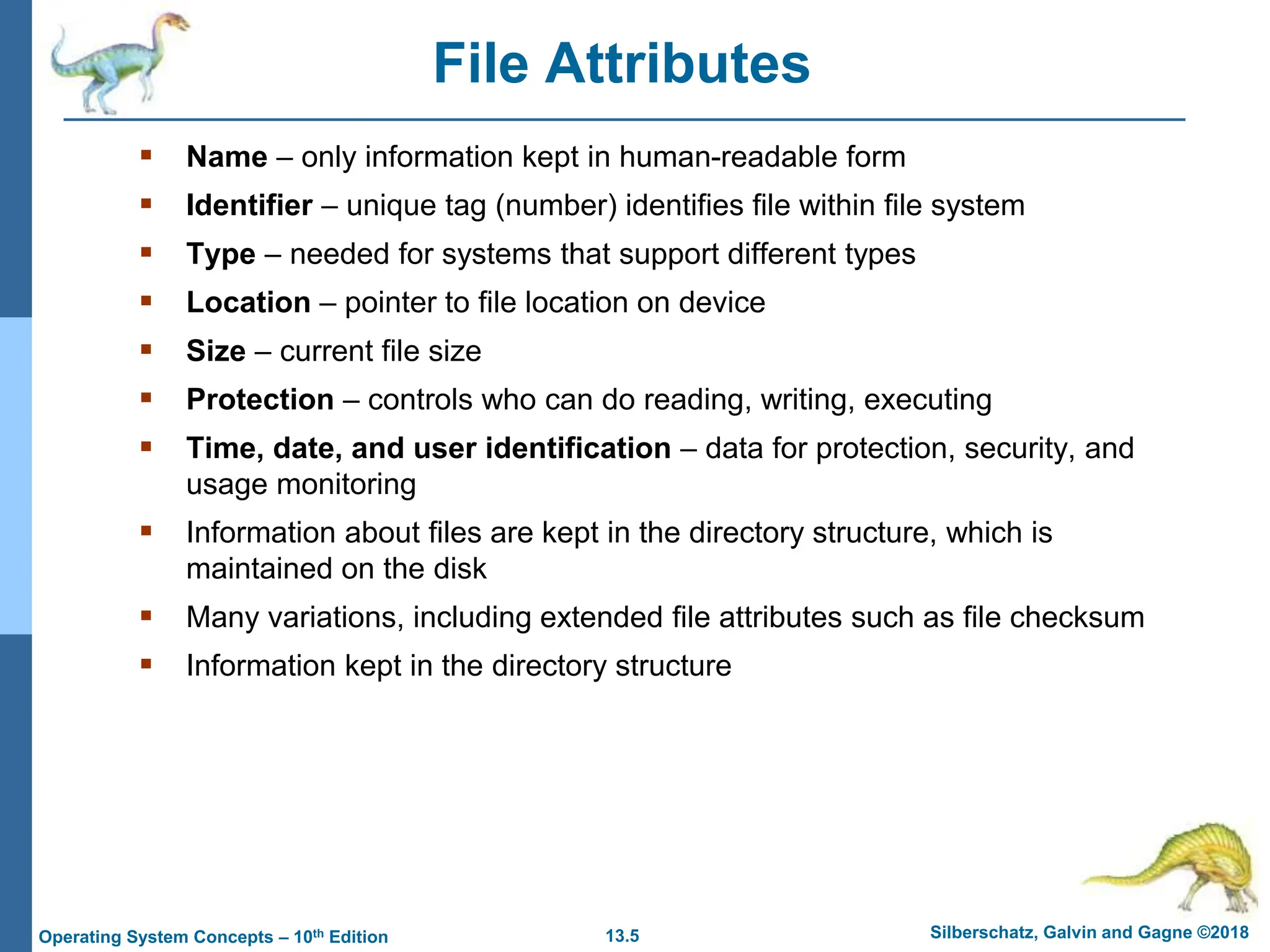
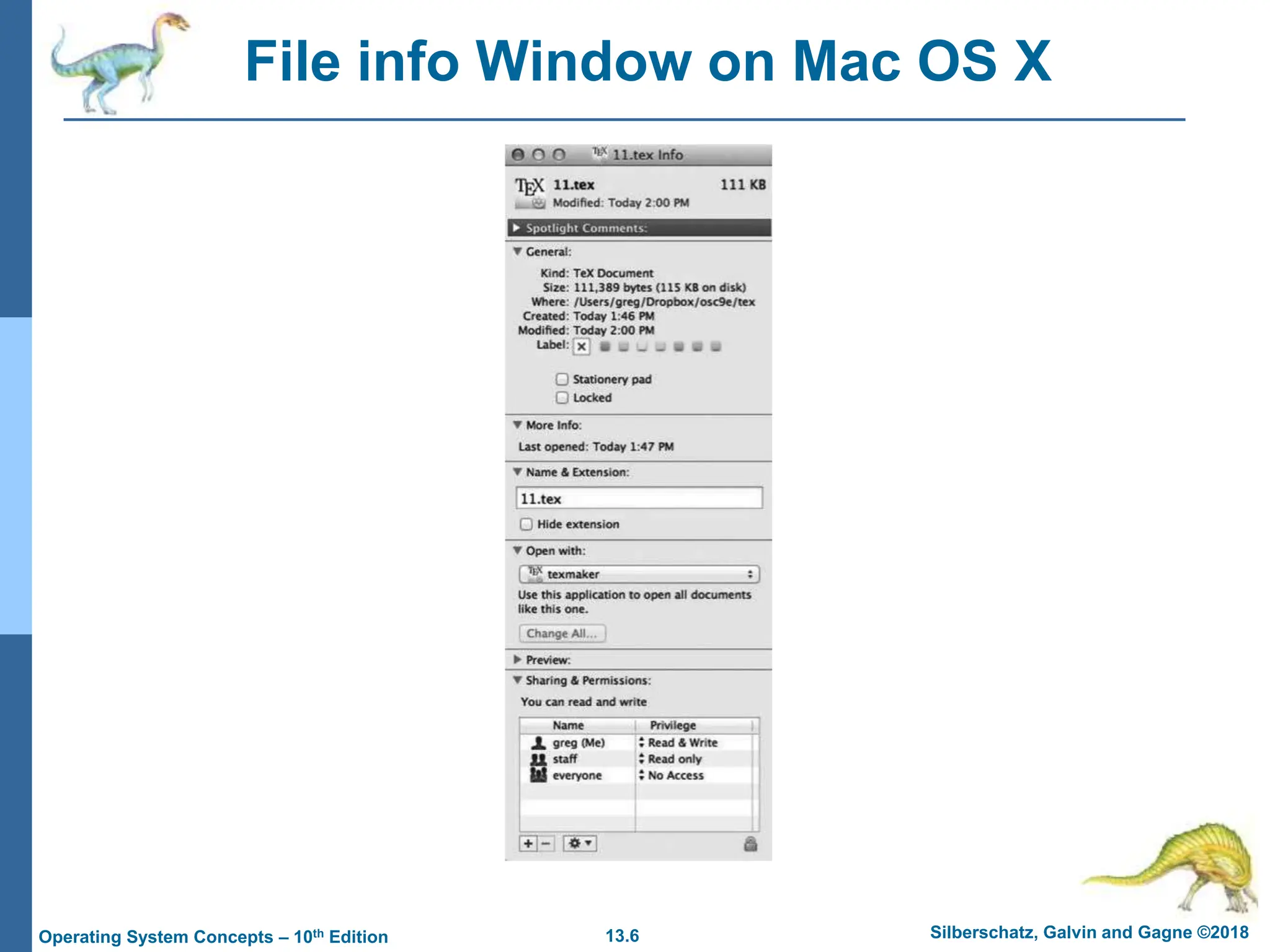
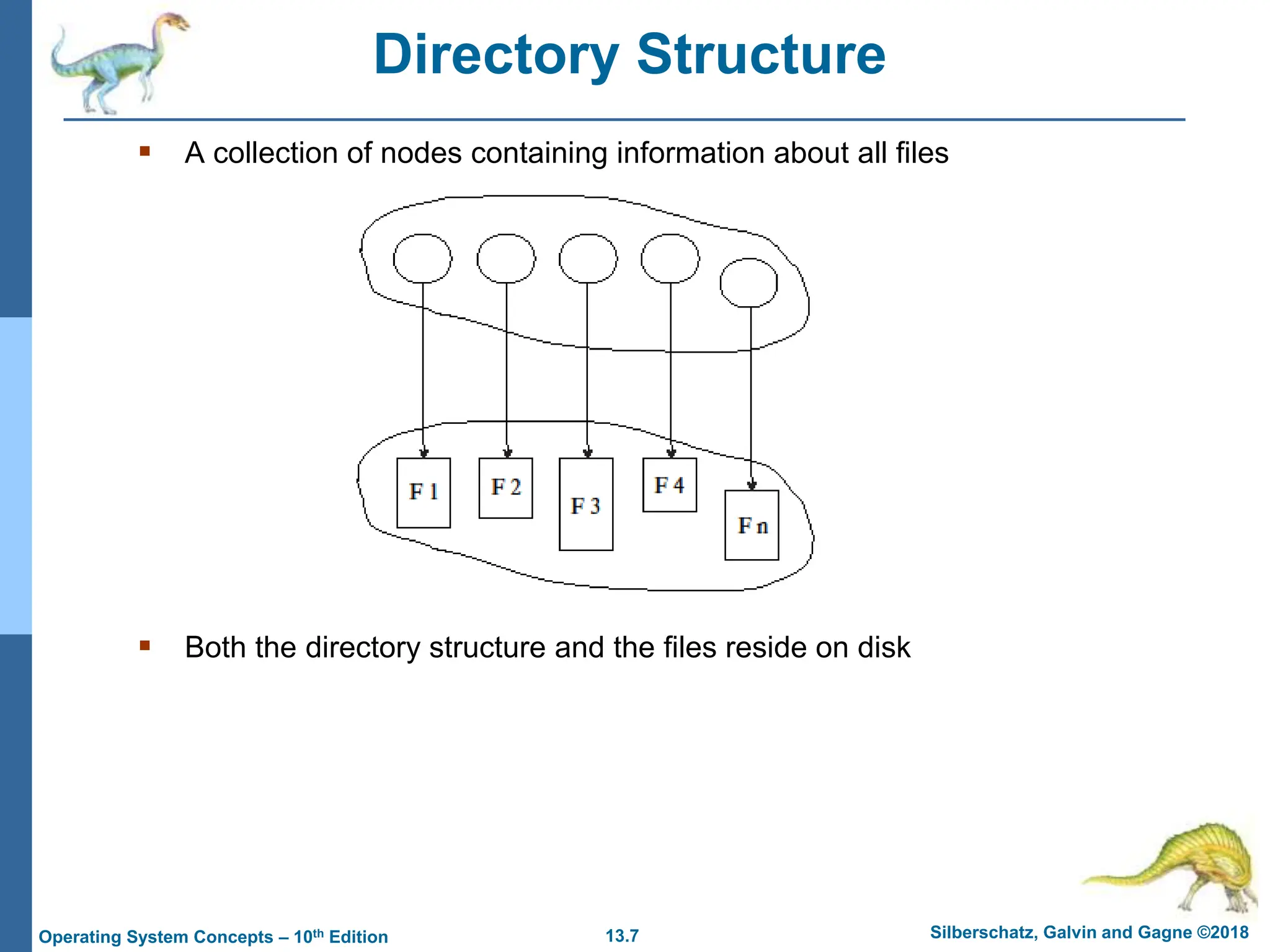


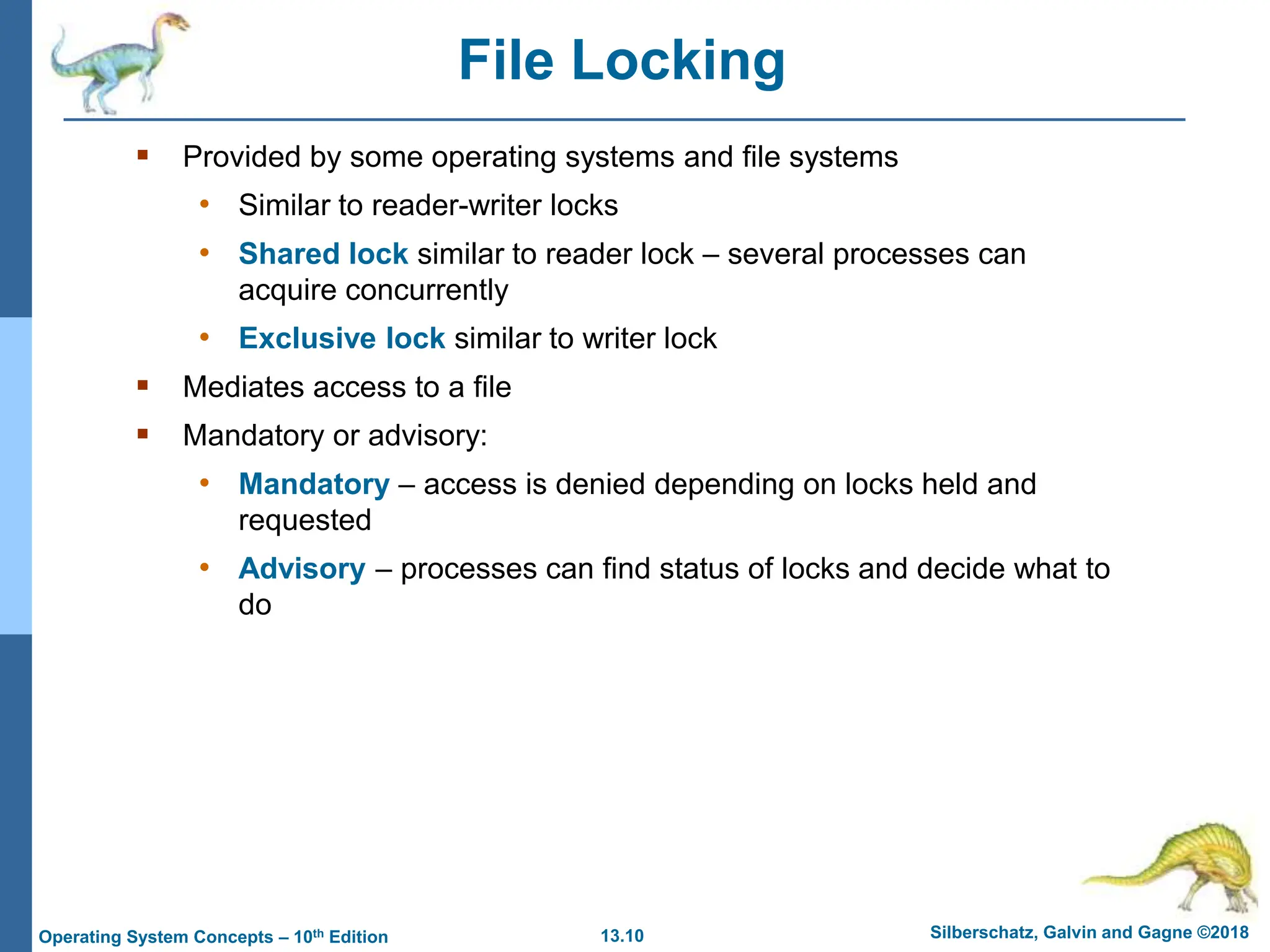
![13.11 Silberschatz, Galvin and Gagne ©2018
Operating System Concepts – 10th Edition
File Locking Example – Java API
import java.io.*;
import java.nio.channels.*;
public class LockingExample {
public static final boolean EXCLUSIVE = false;
public static final boolean SHARED = true;
public static void main(String arsg[]) throws IOException {
FileLock sharedLock = null;
FileLock exclusiveLock = null;
try {
RandomAccessFile raf = new RandomAccessFile("file.txt", "rw");
// get the channel for the file
FileChannel ch = raf.getChannel();
// this locks the first half of the file - exclusive
exclusiveLock = ch.lock(0, raf.length()/2, EXCLUSIVE);
/** Now modify the data . . . */
// release the lock
exclusiveLock.release();](https://image.slidesharecdn.com/file-systeminterface-240118150645-a9eac33d/75/file-system-interface-pptx-11-2048.jpg)
